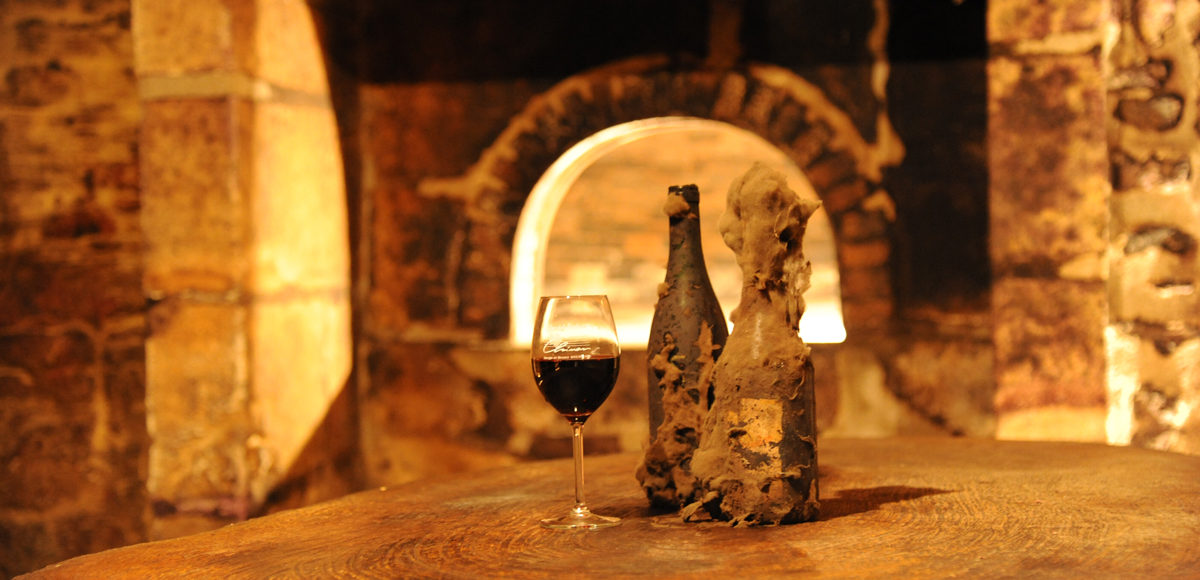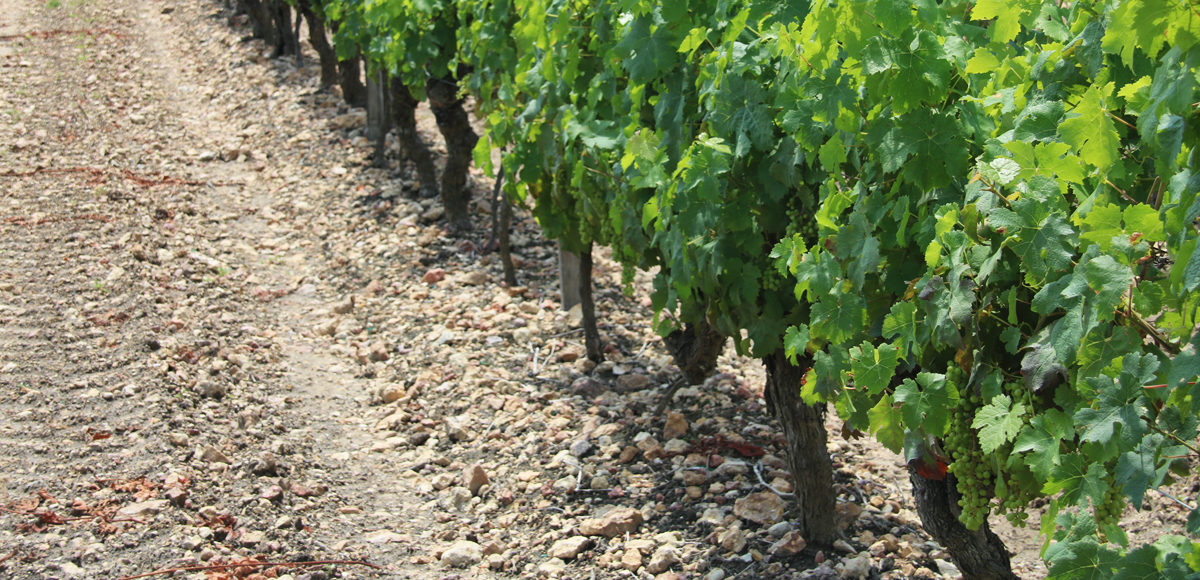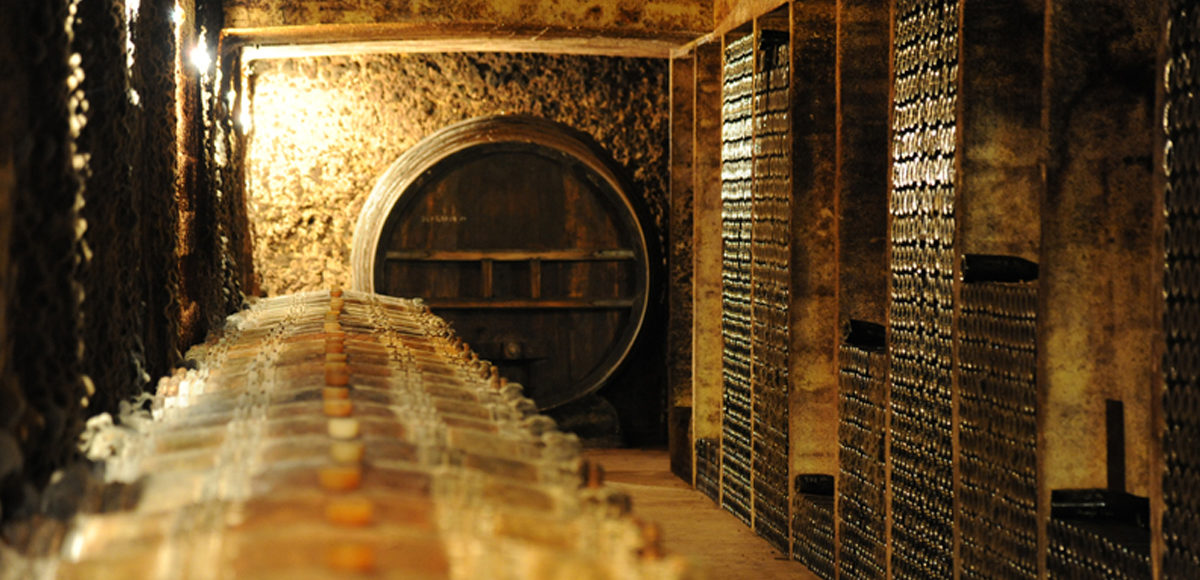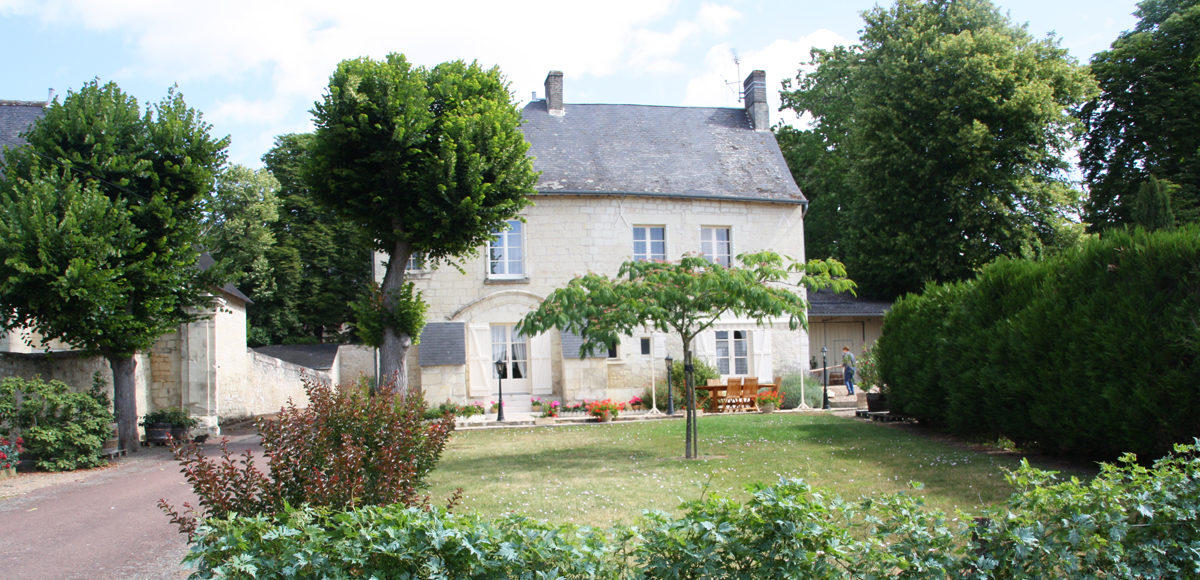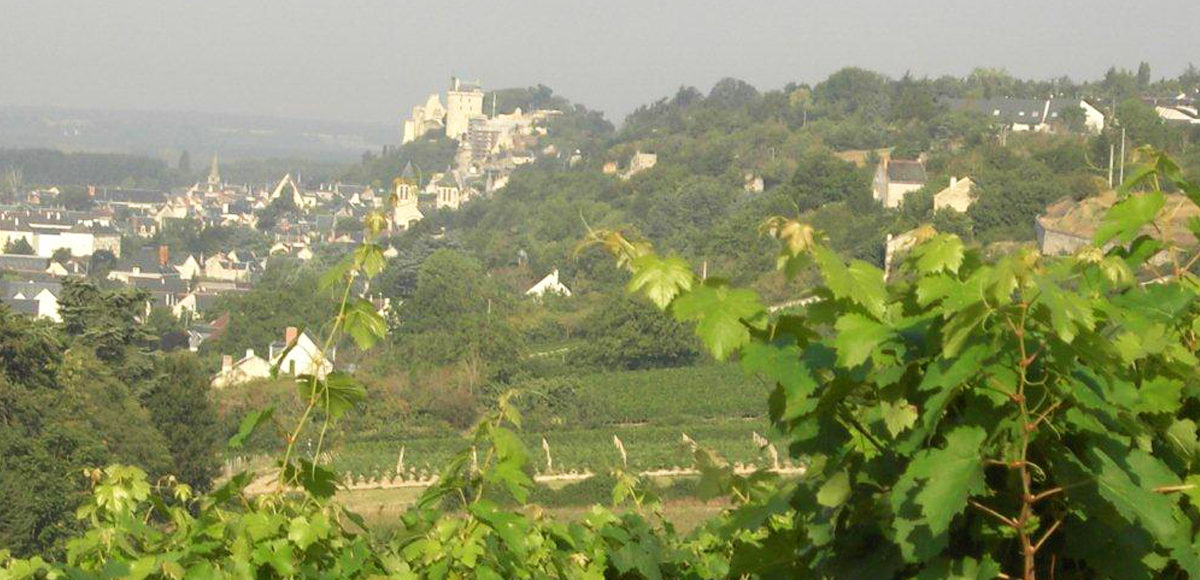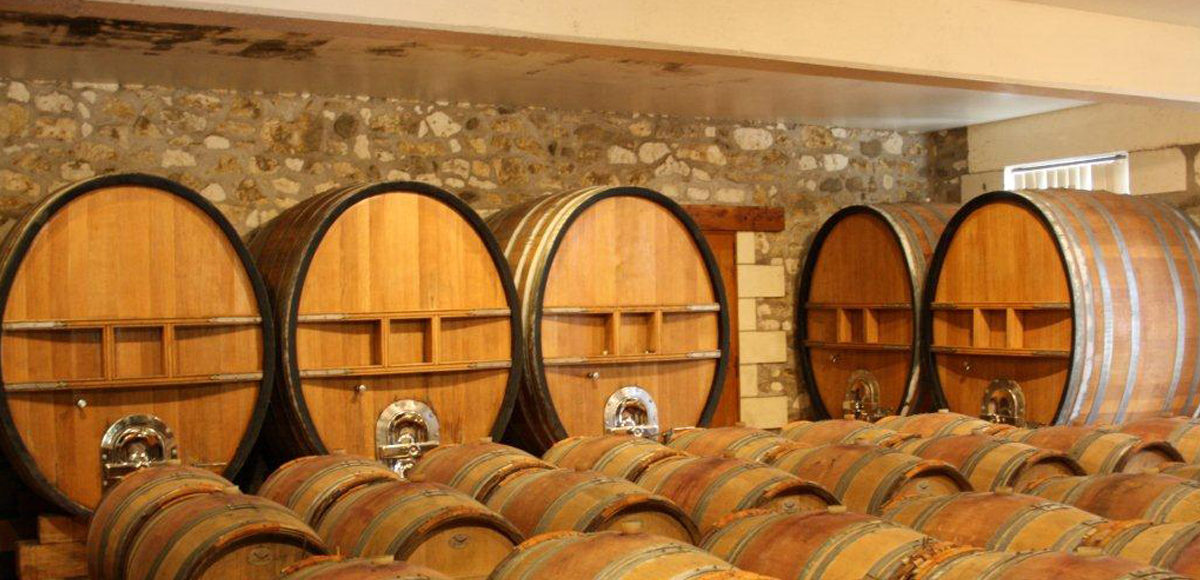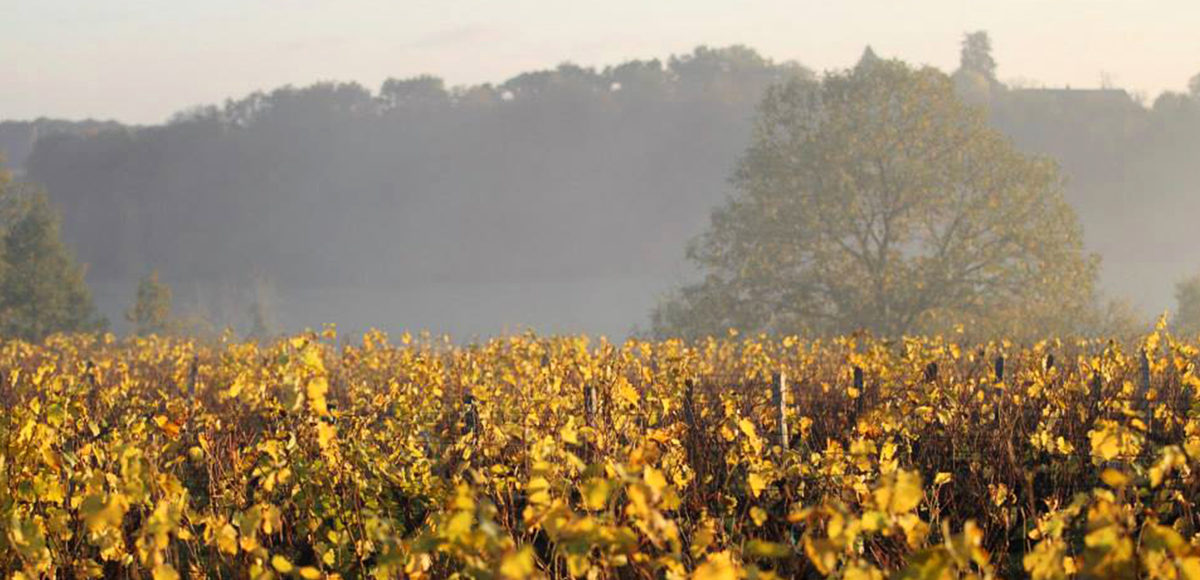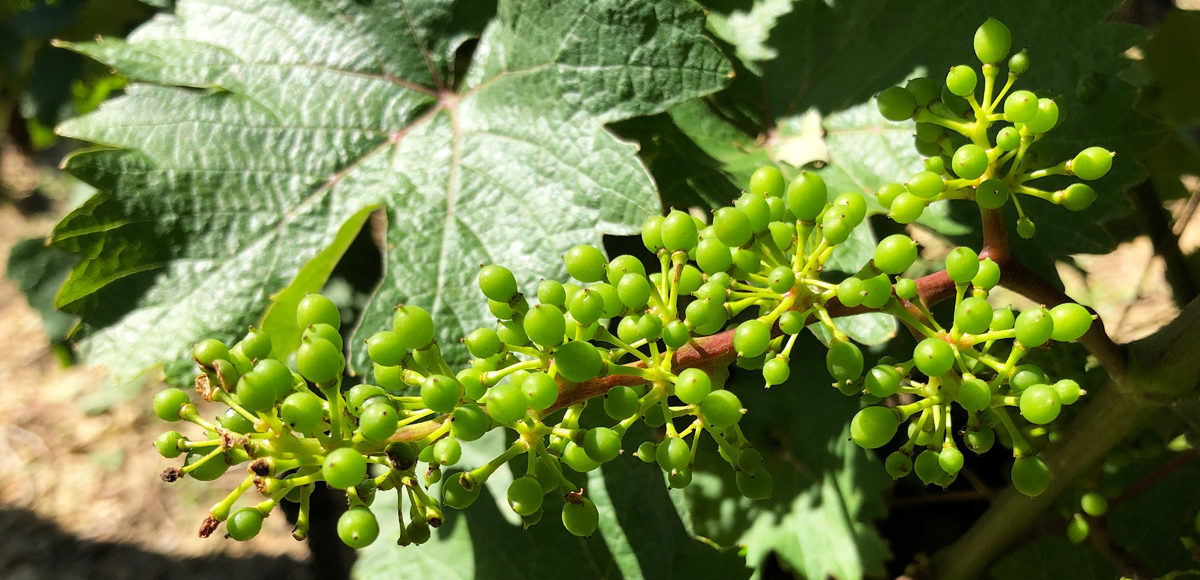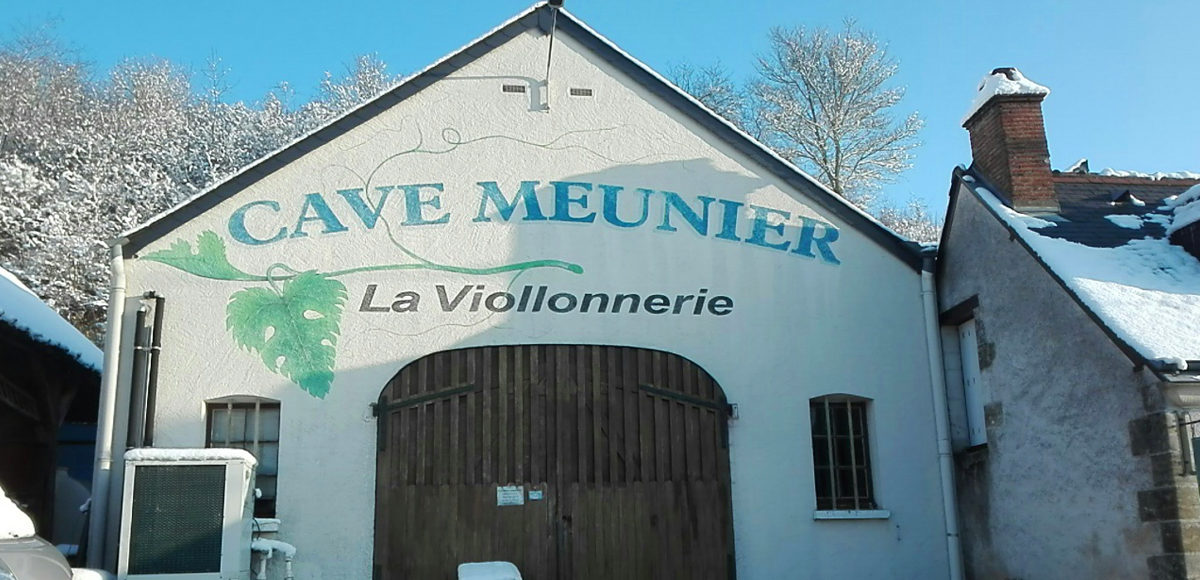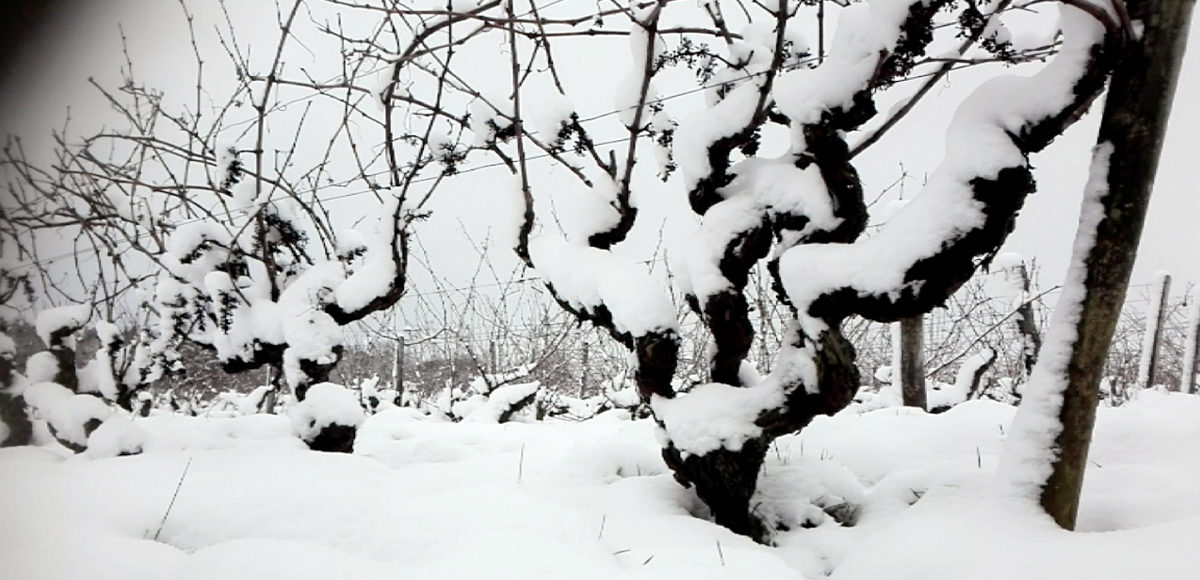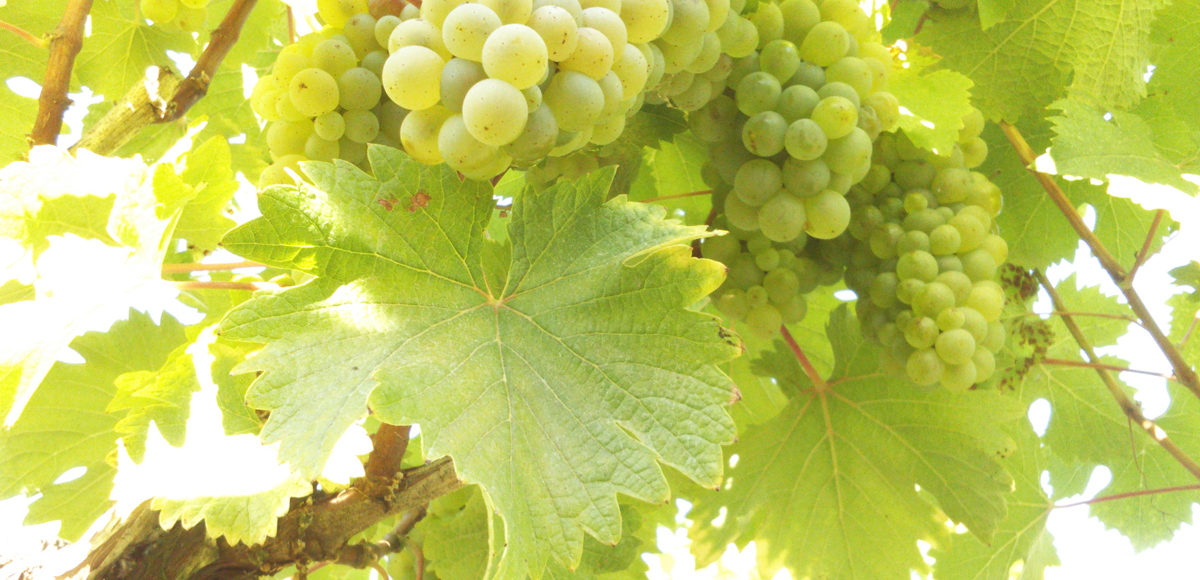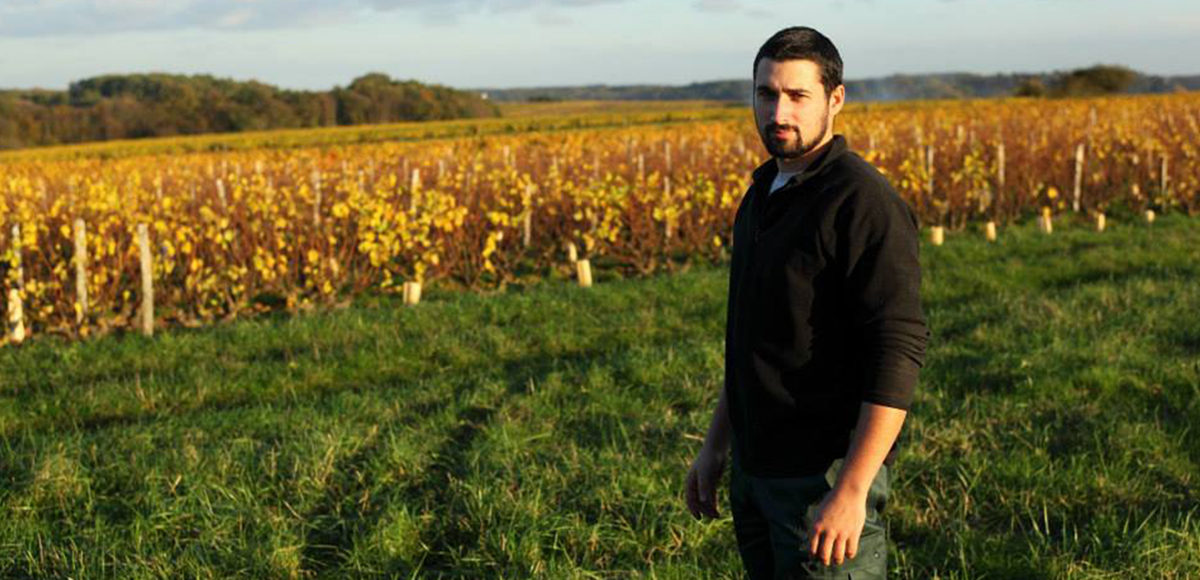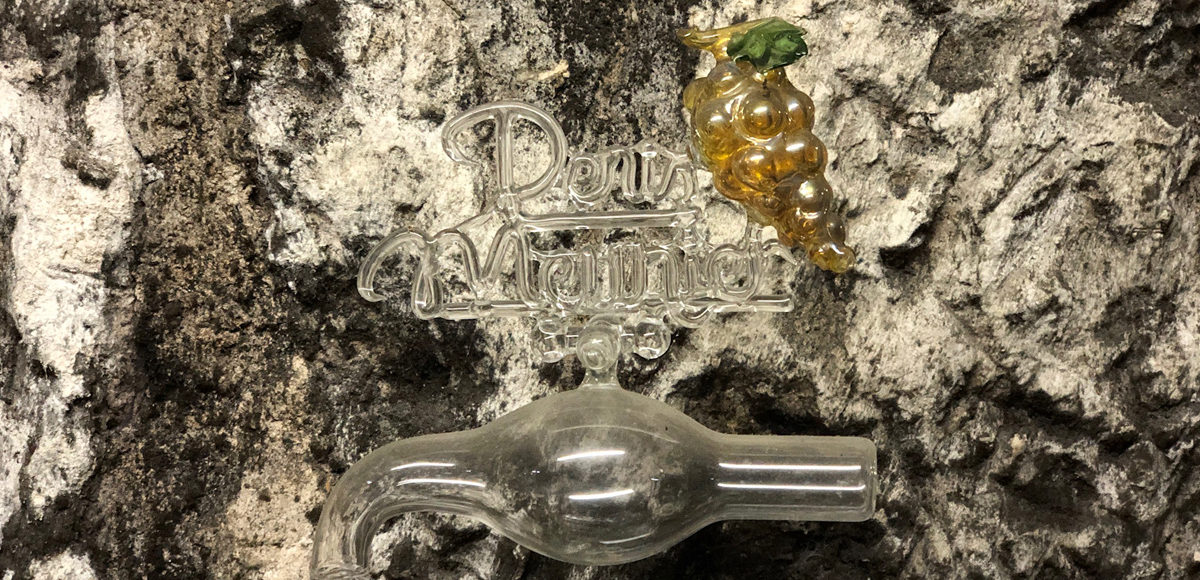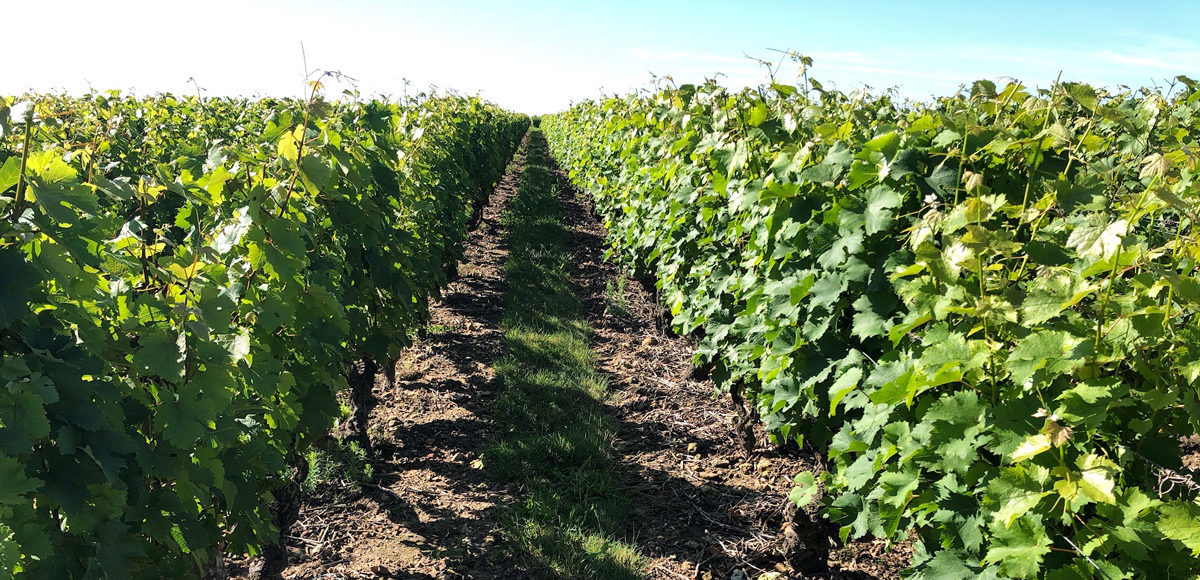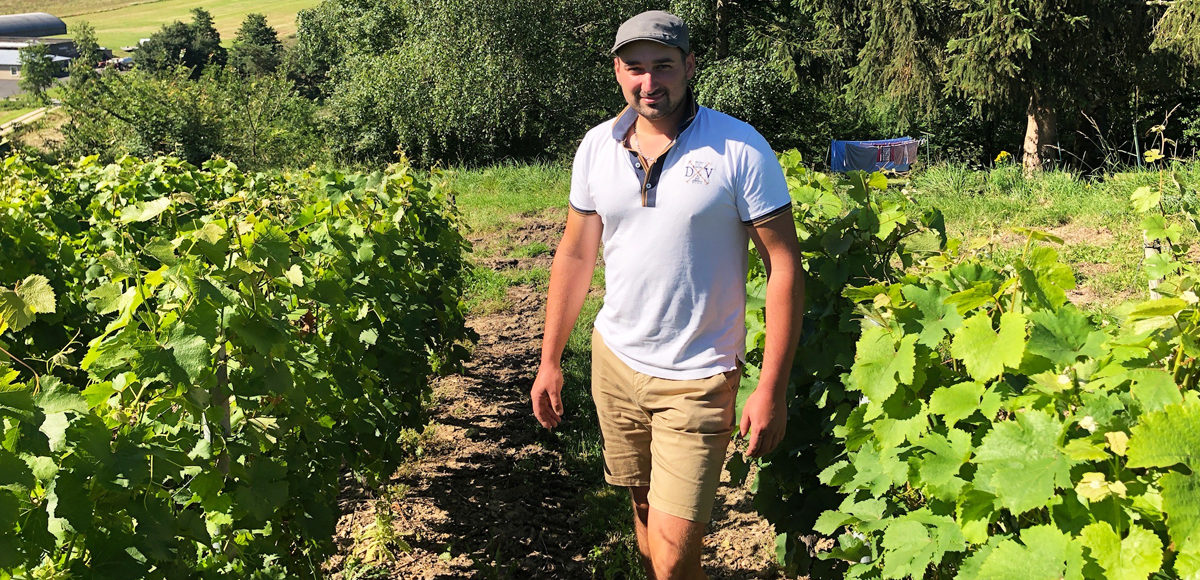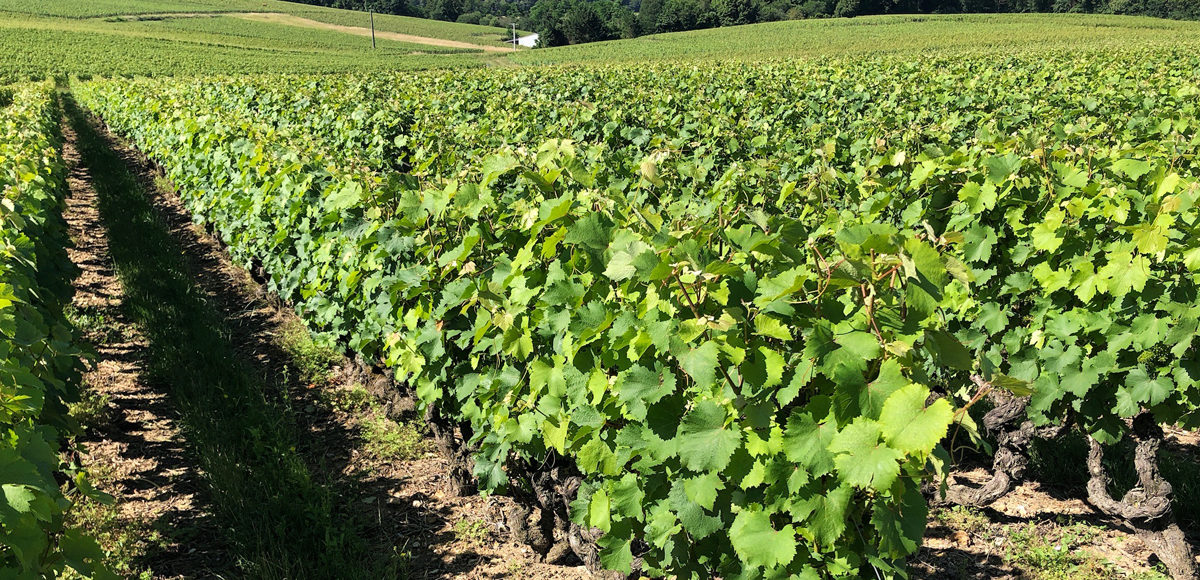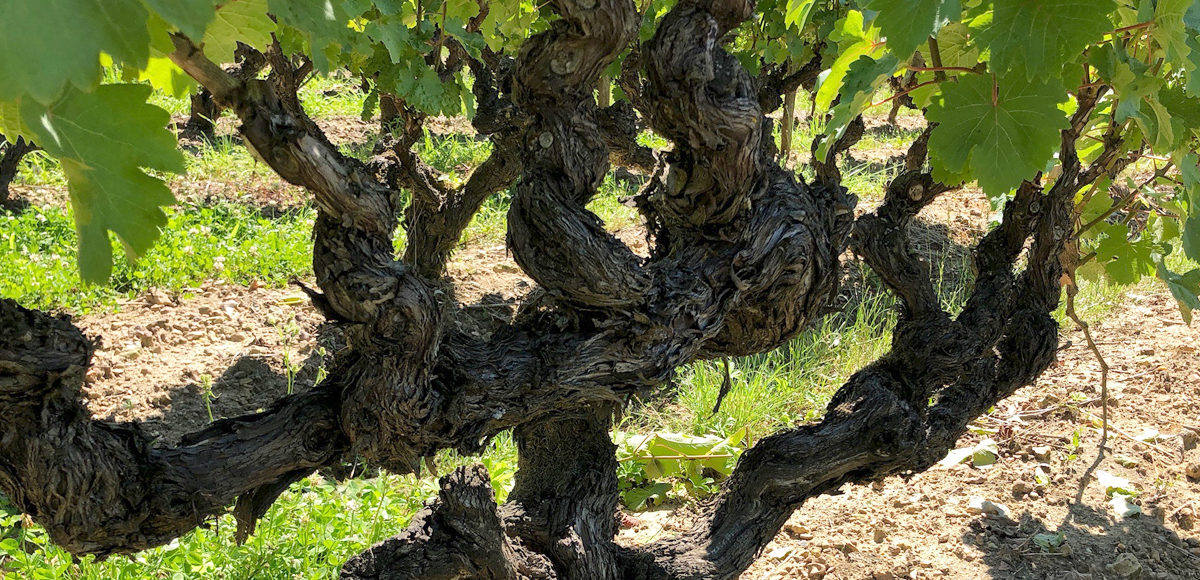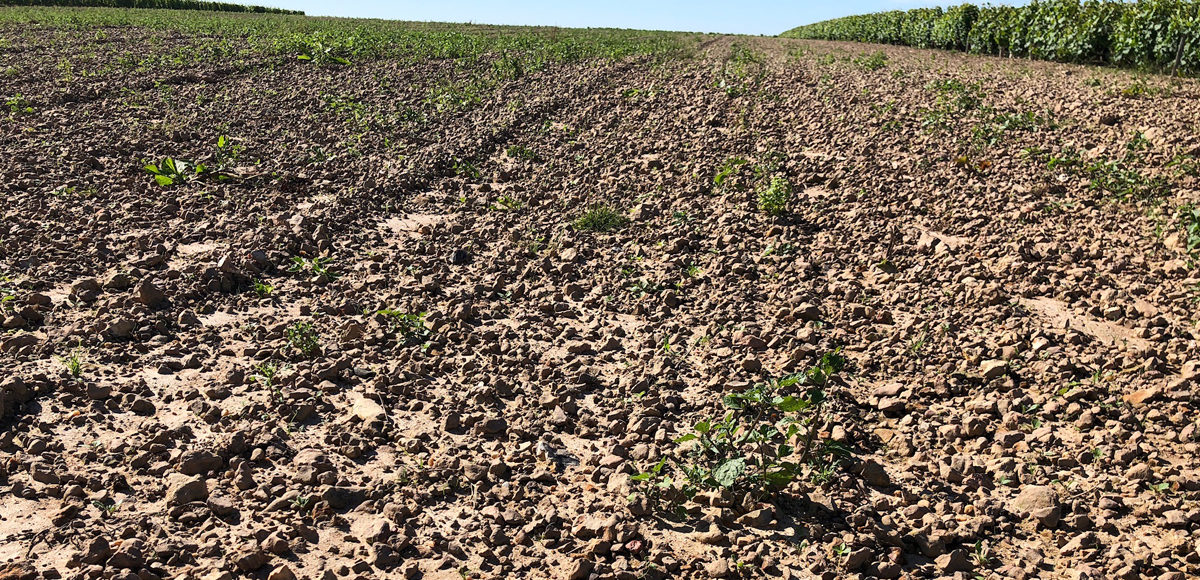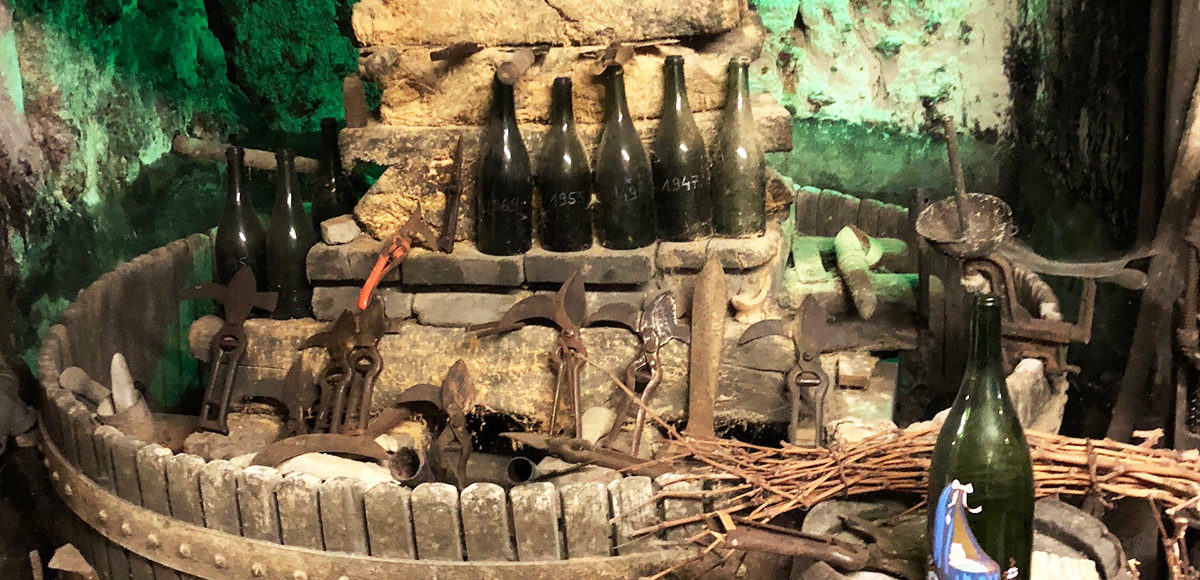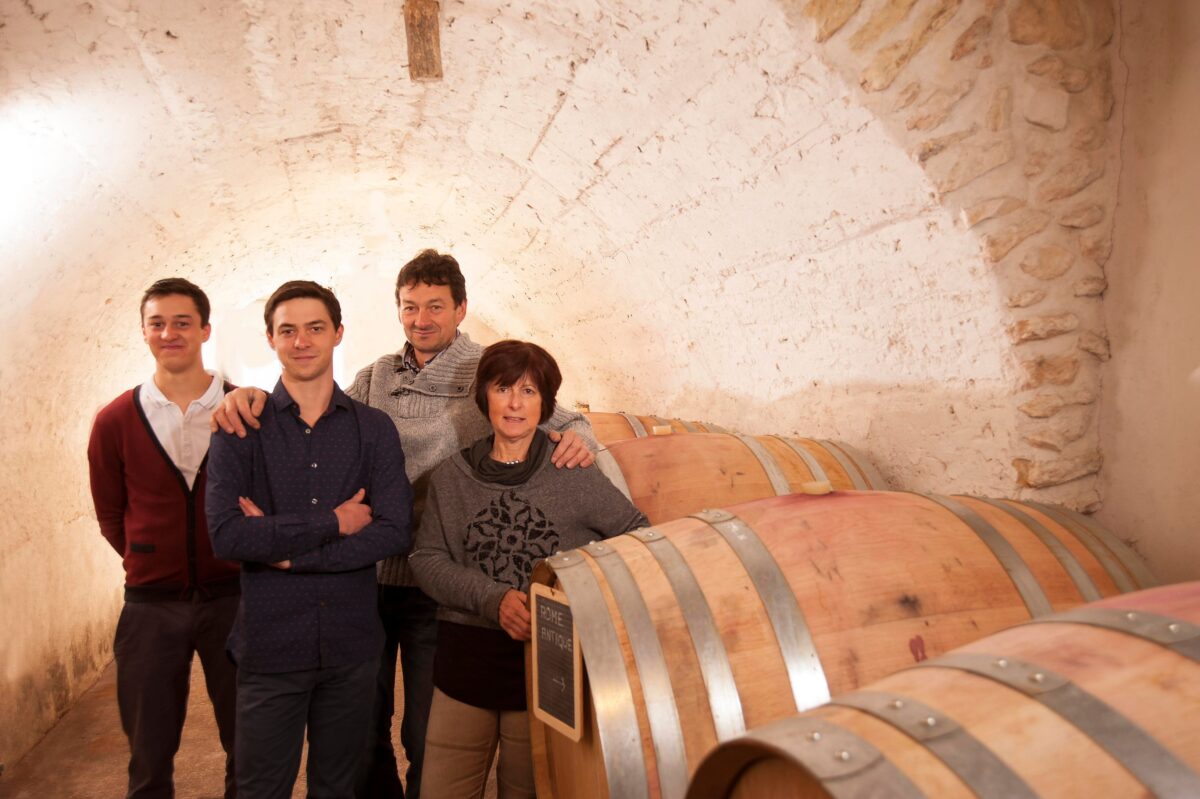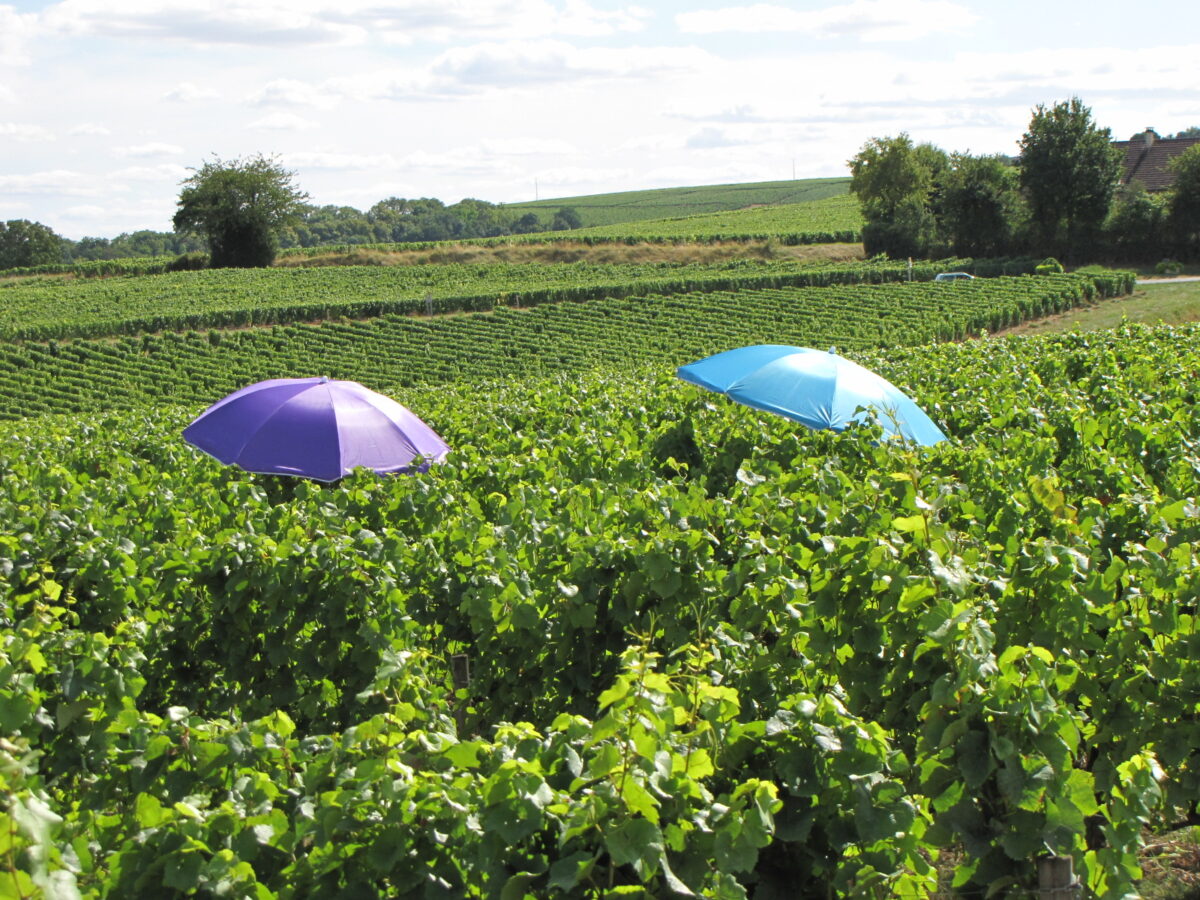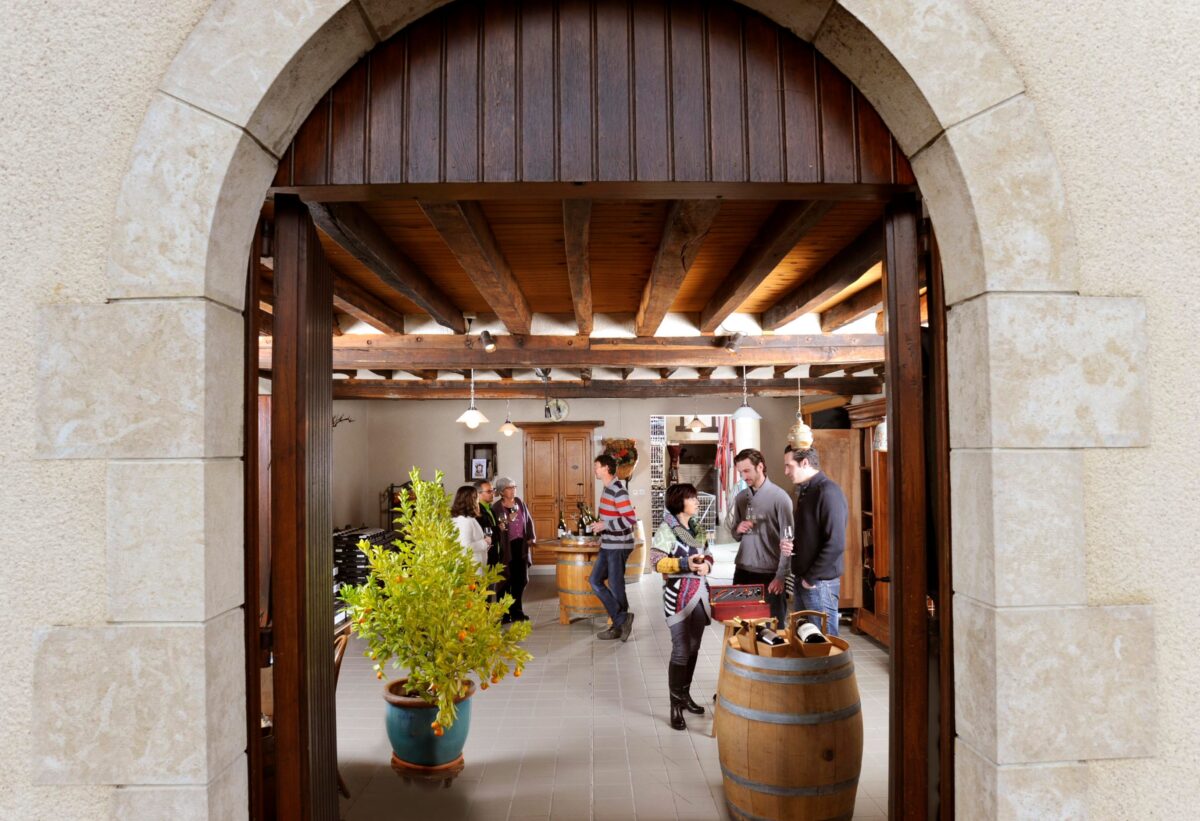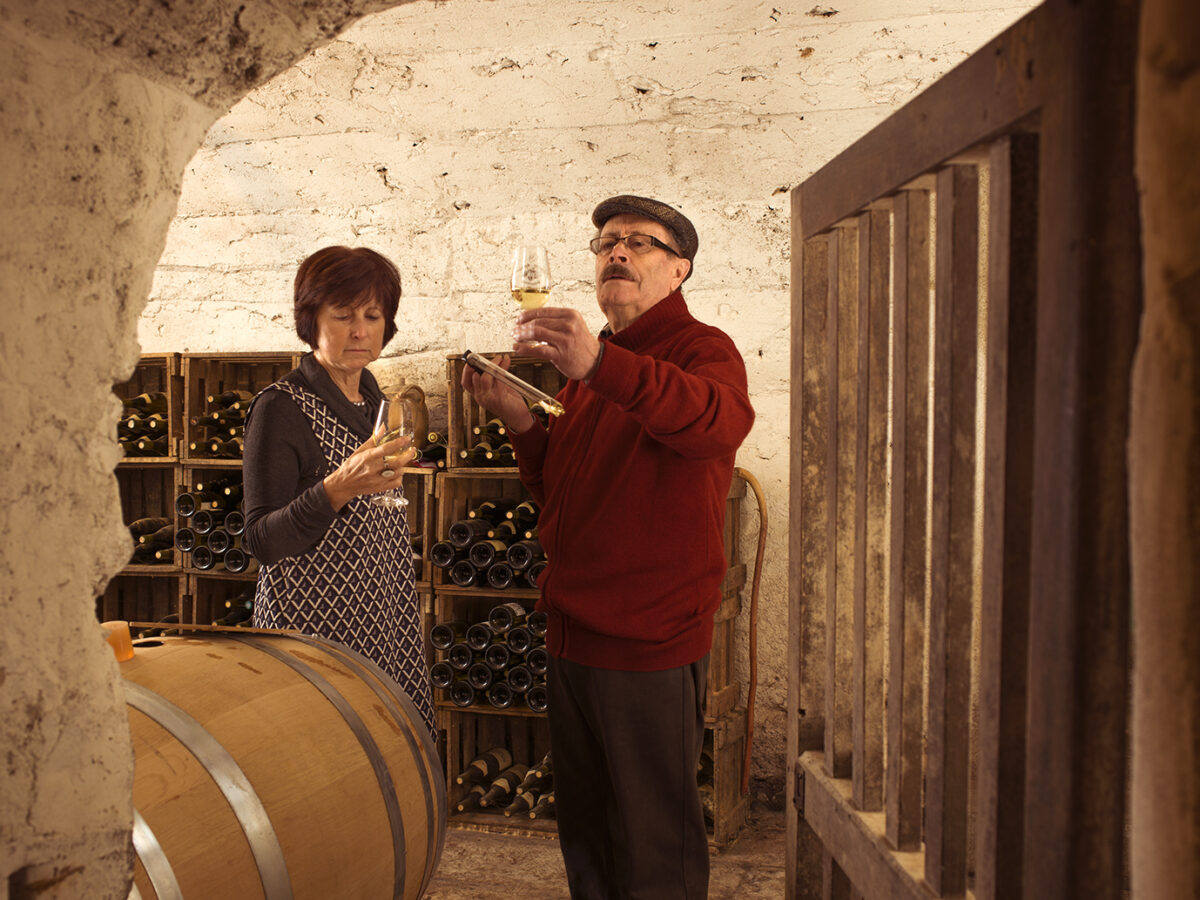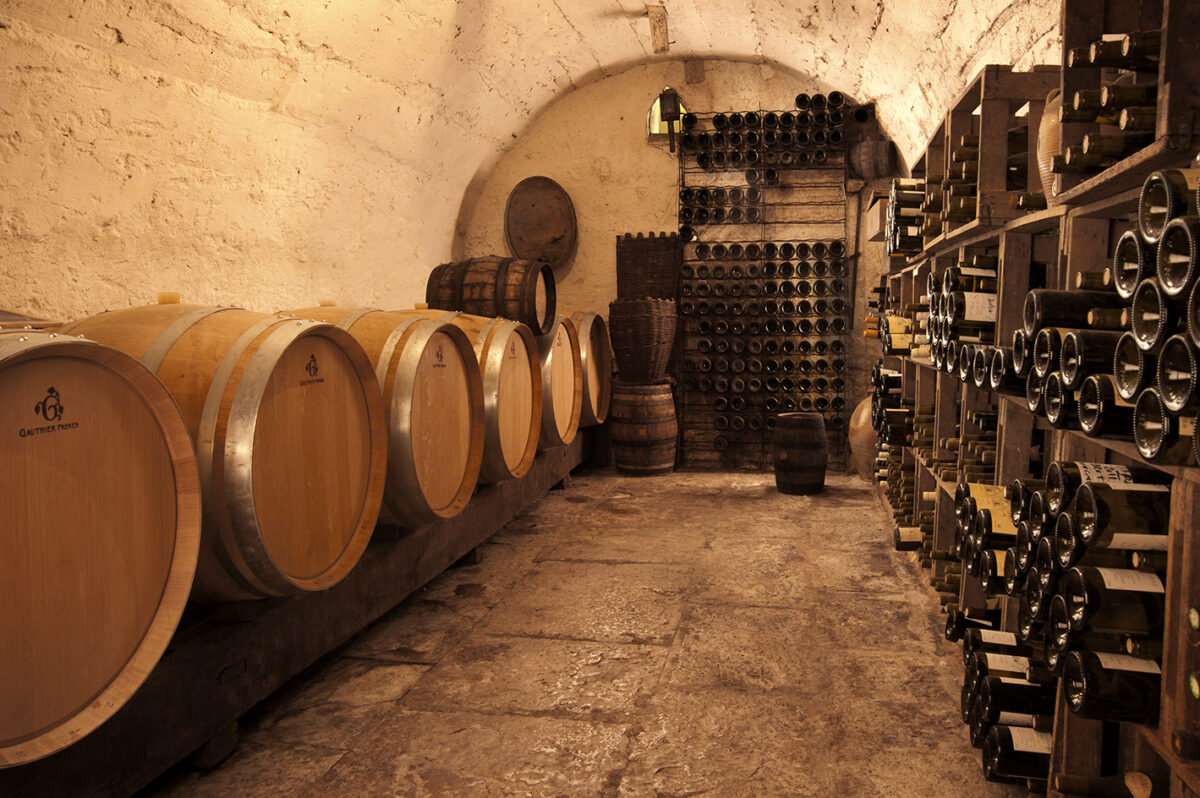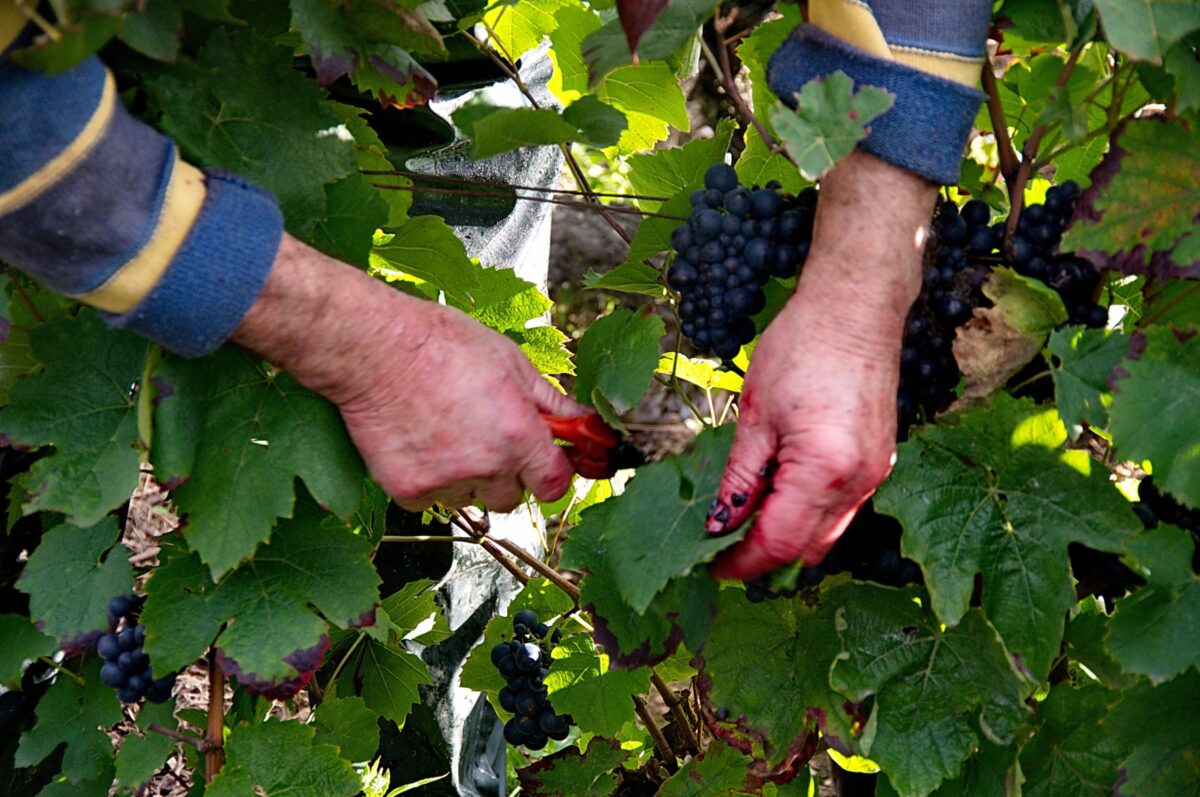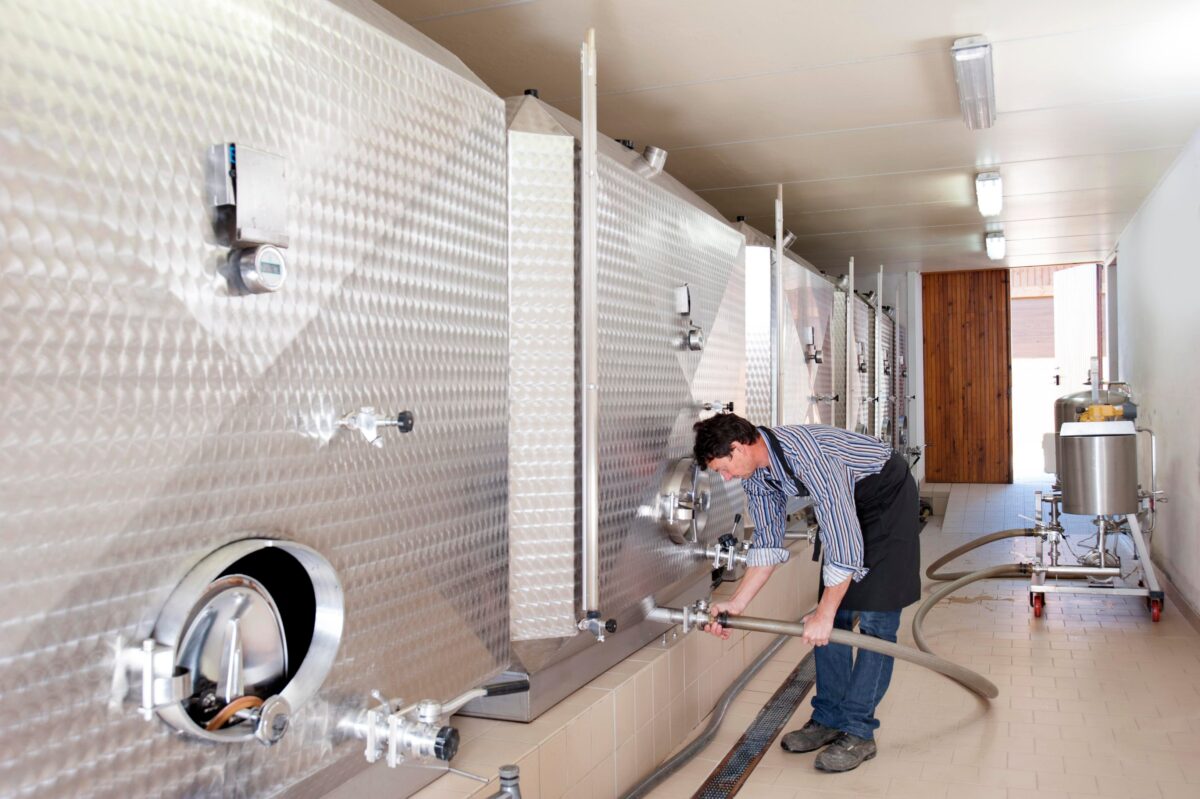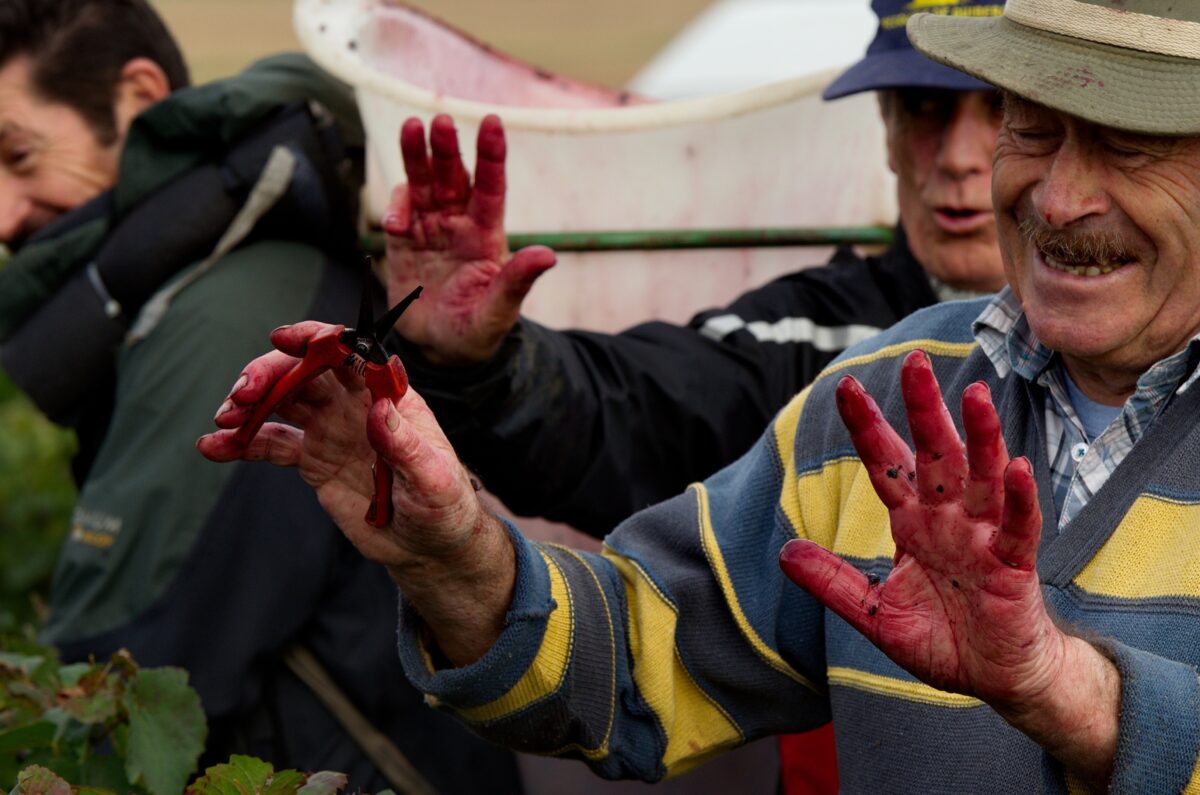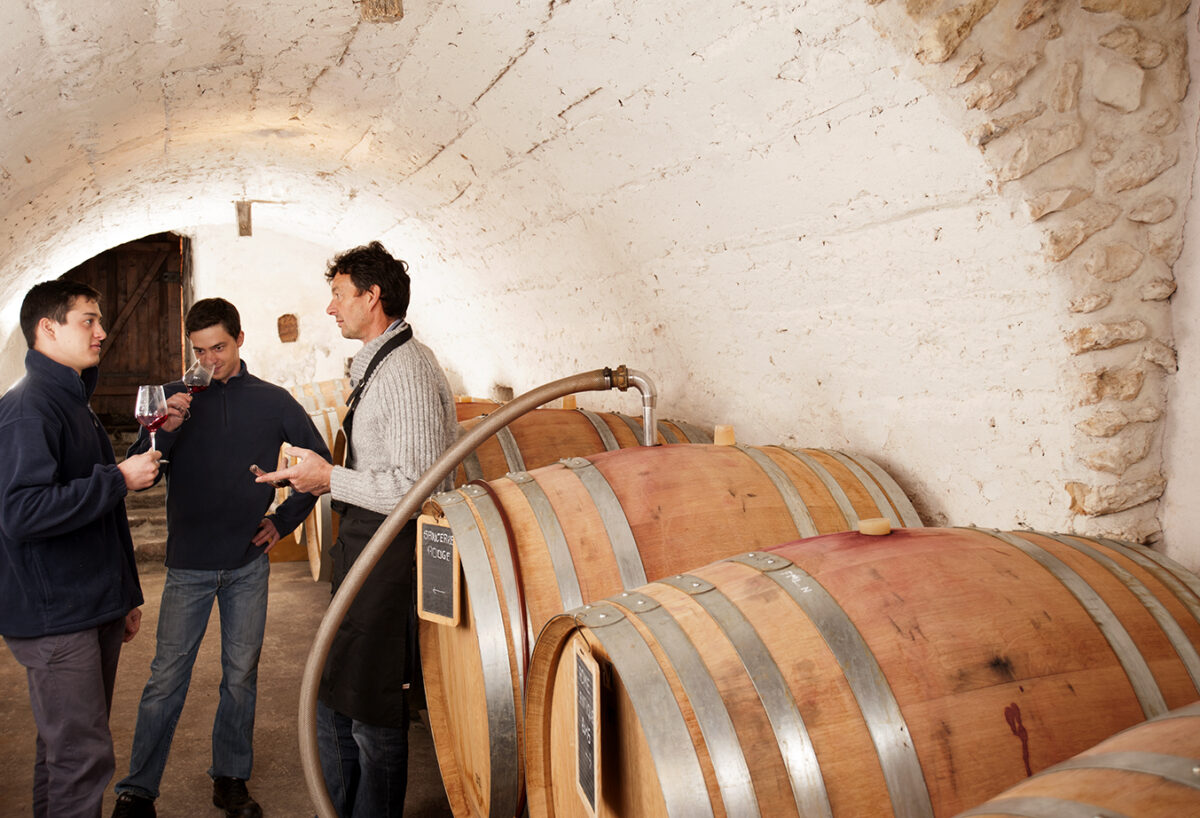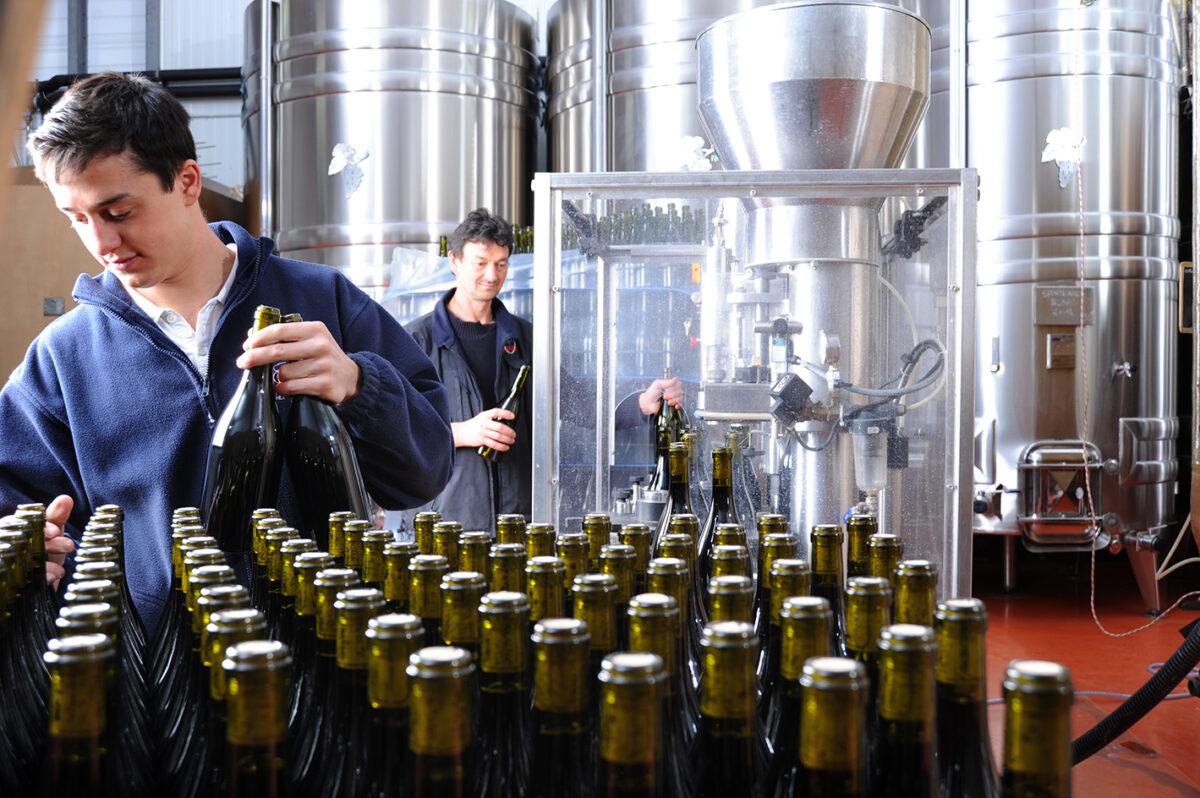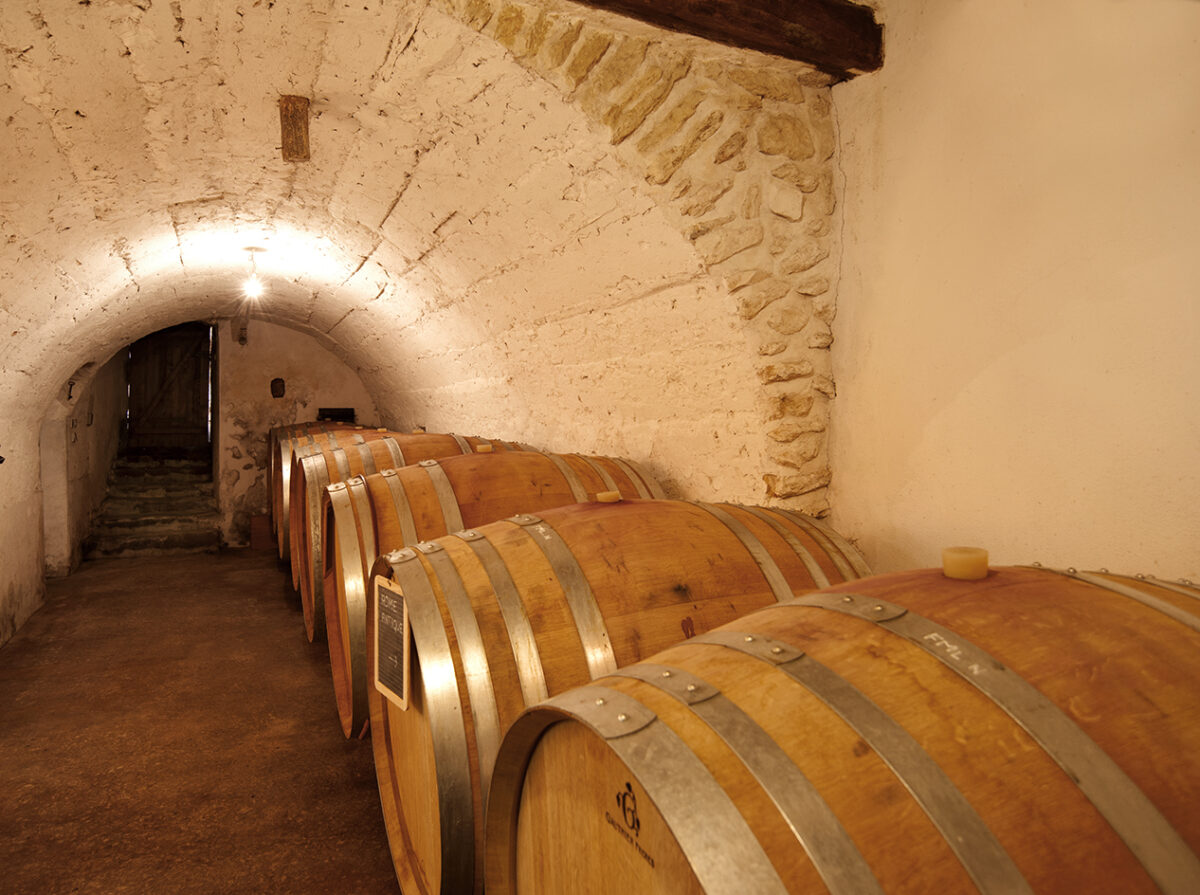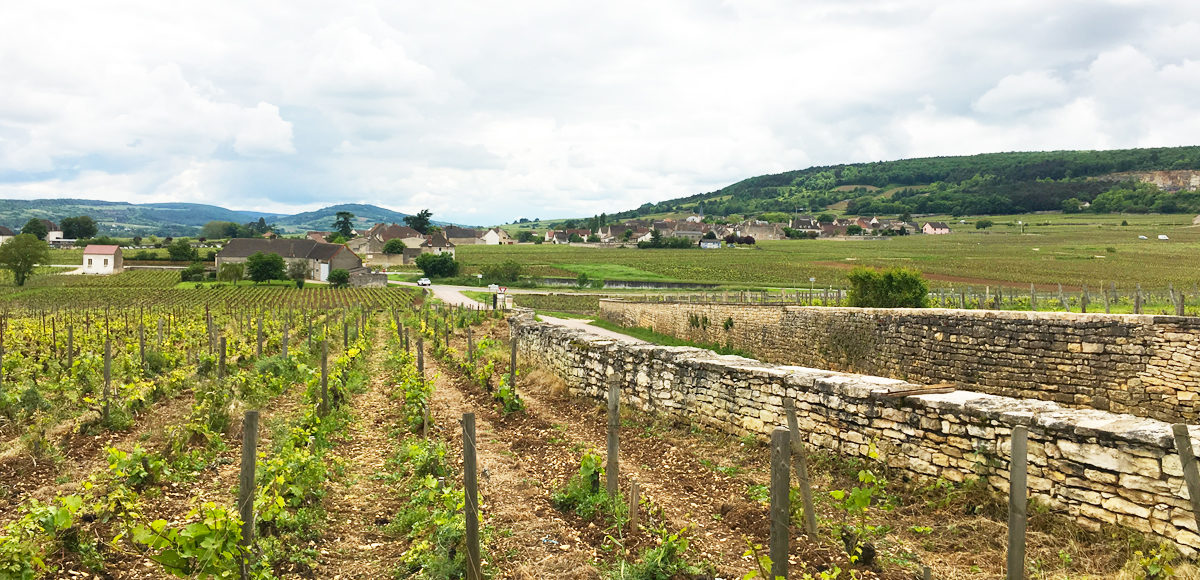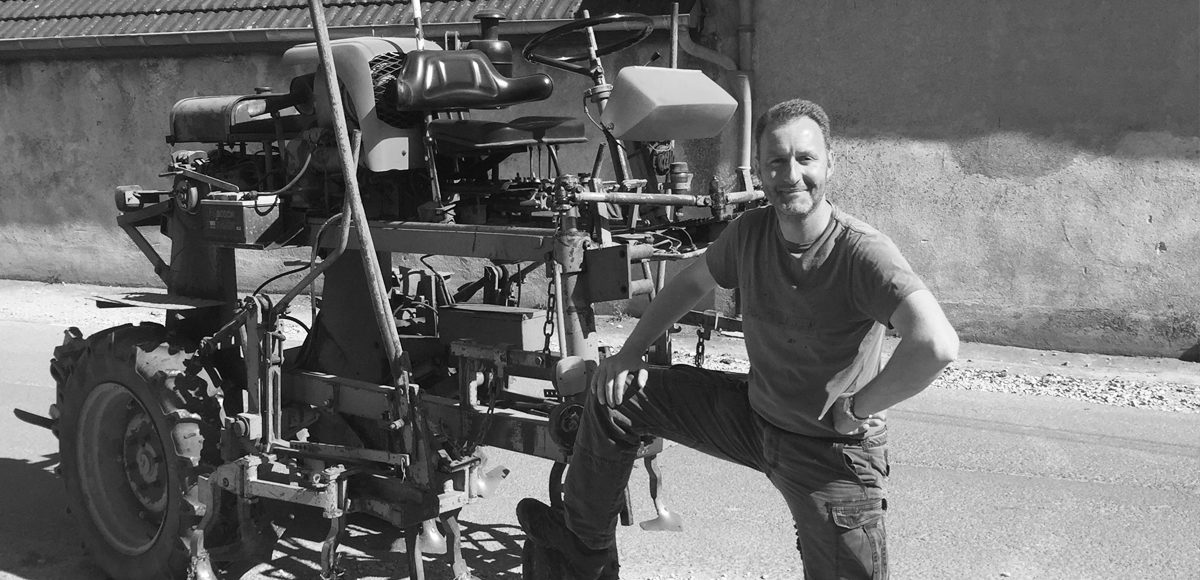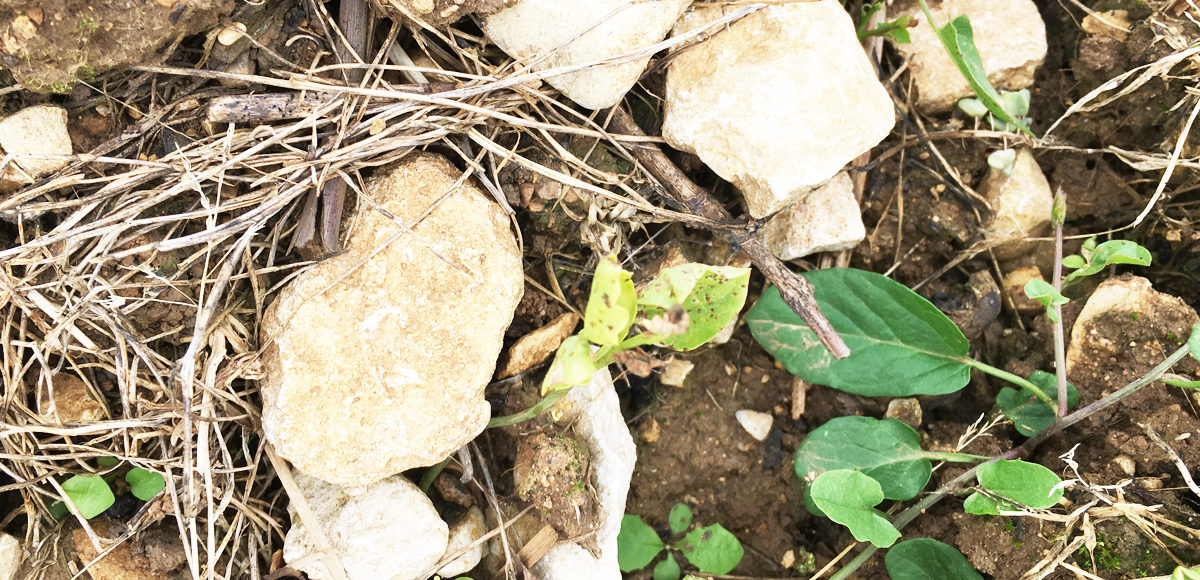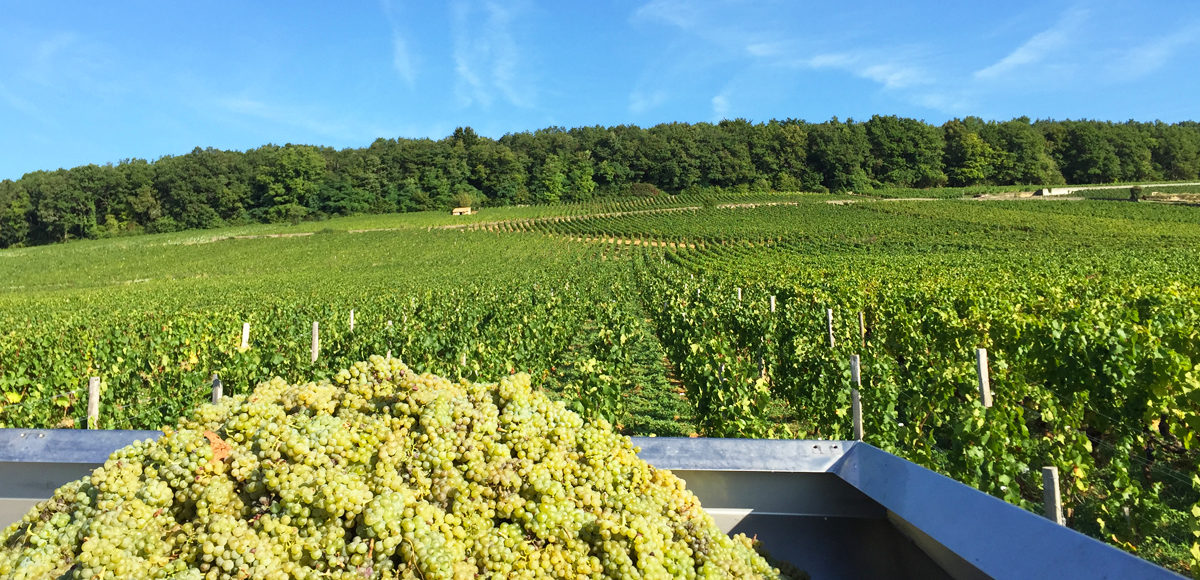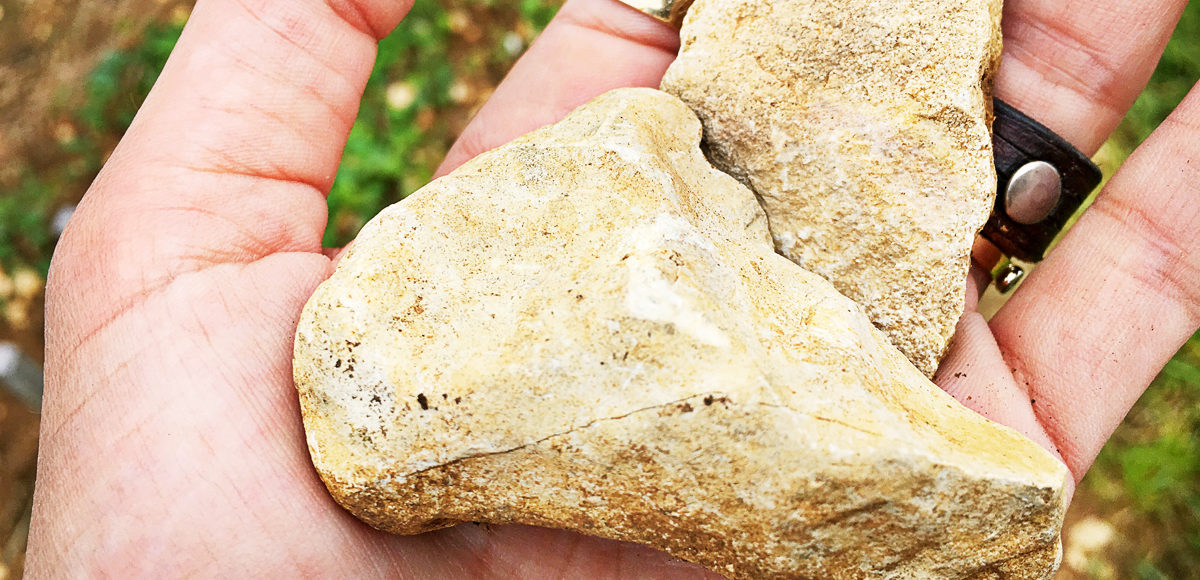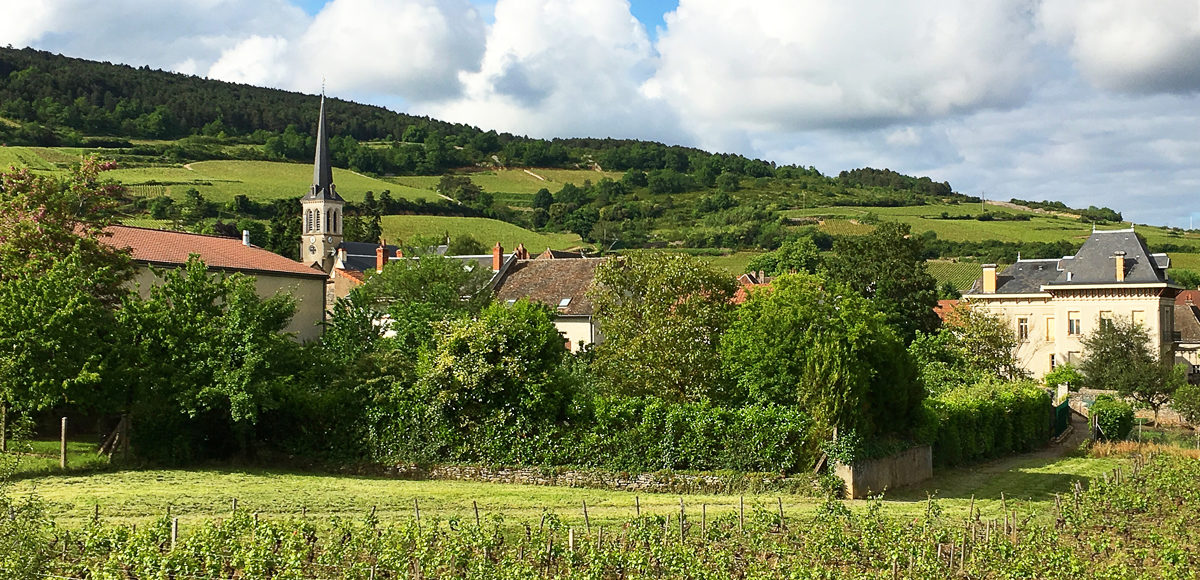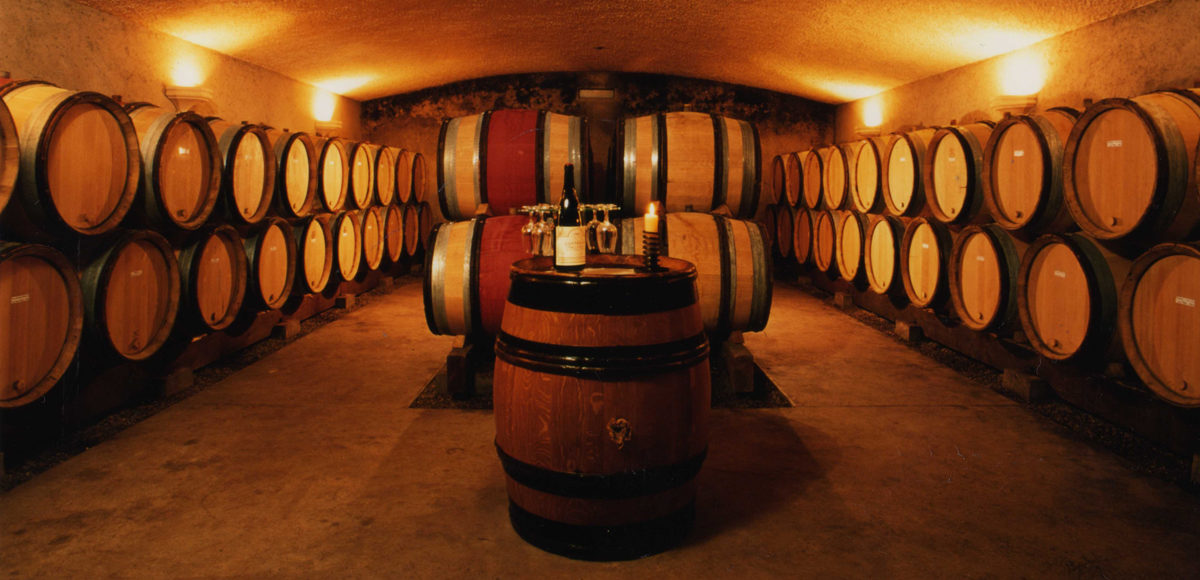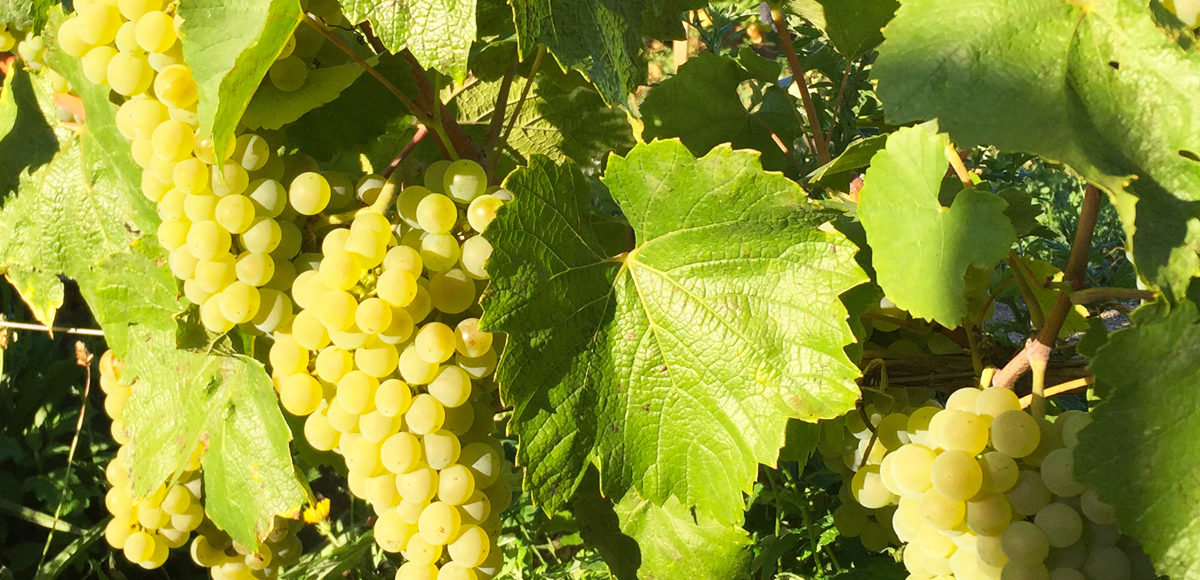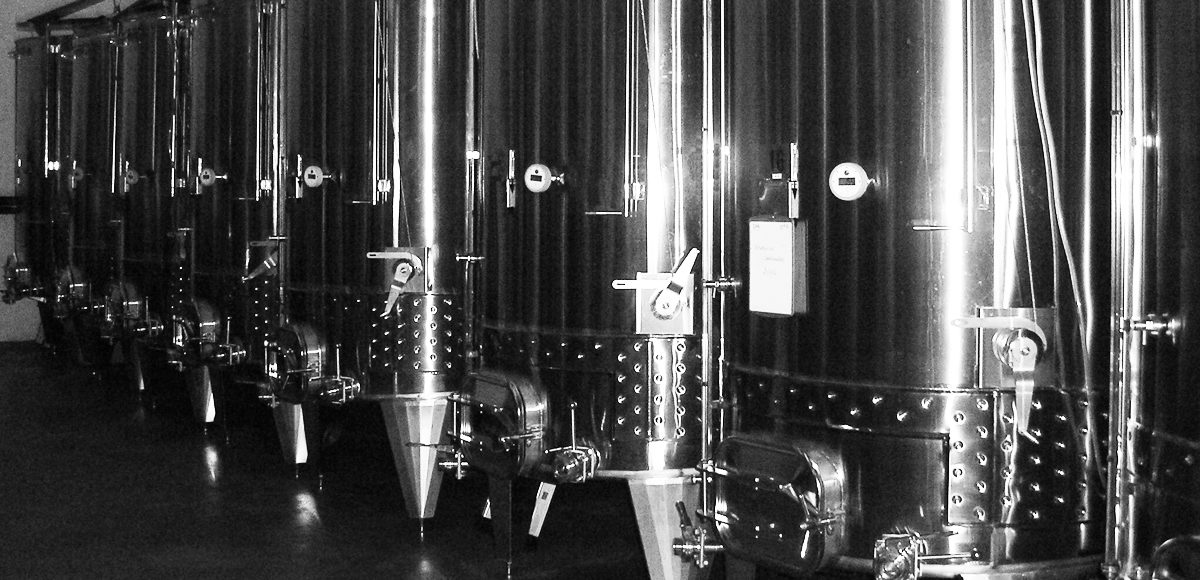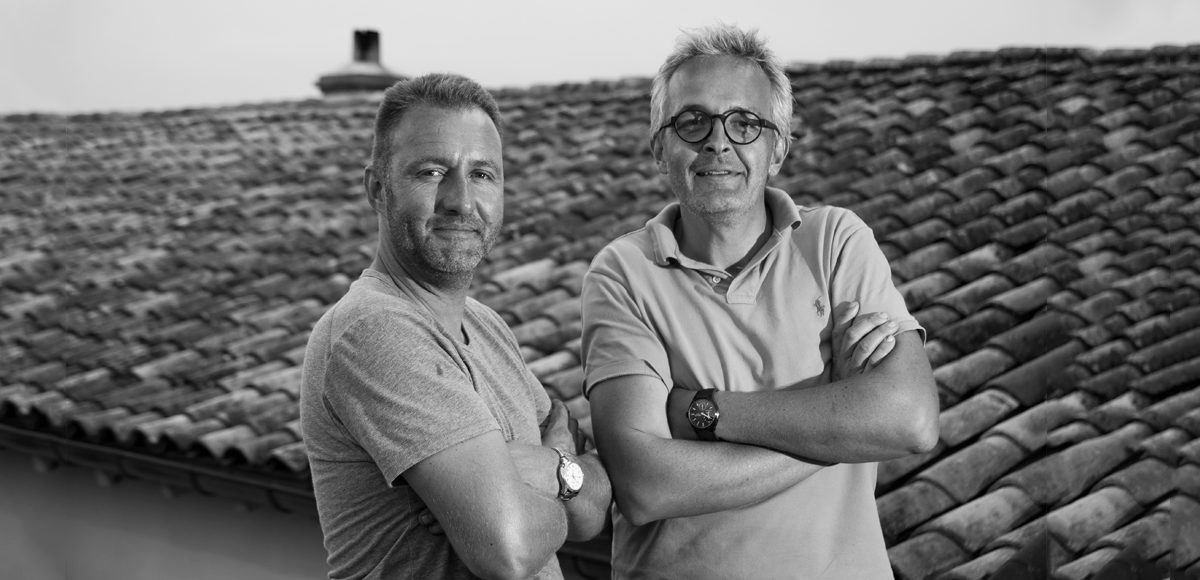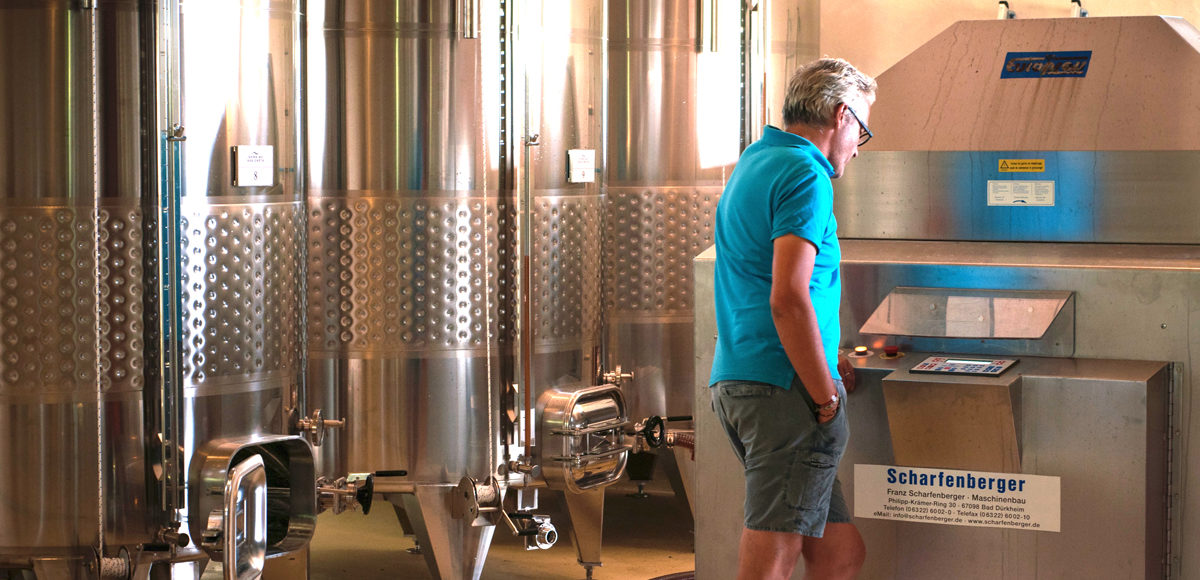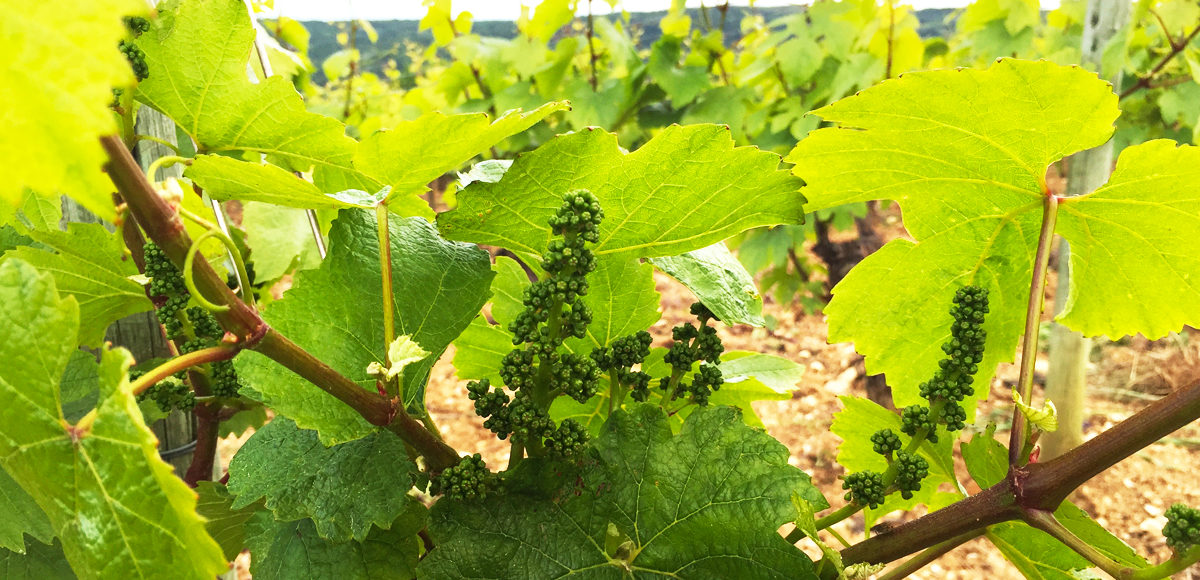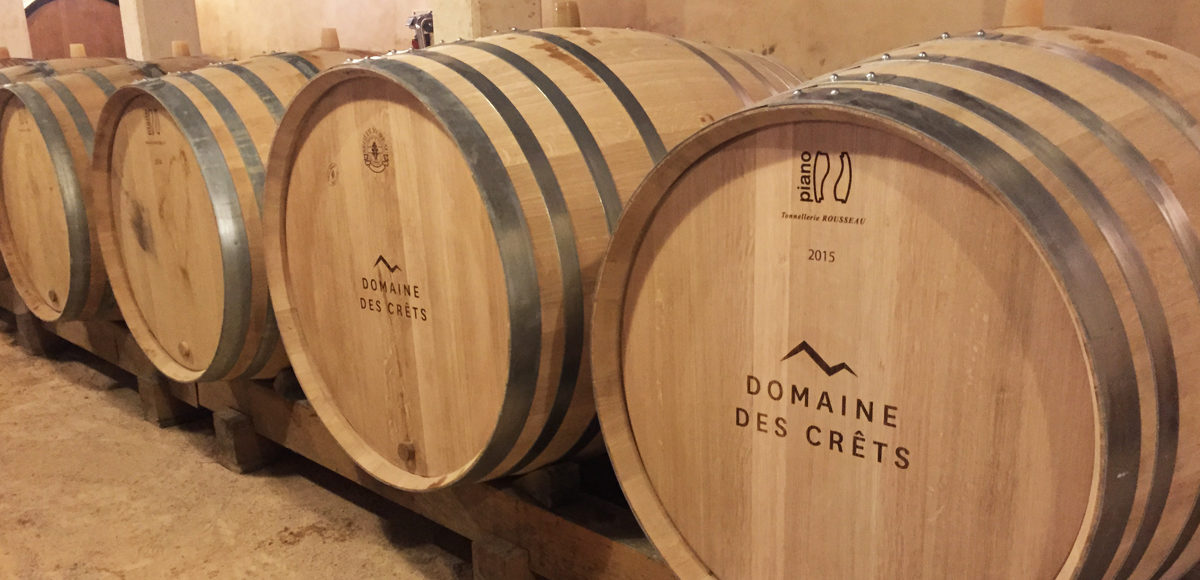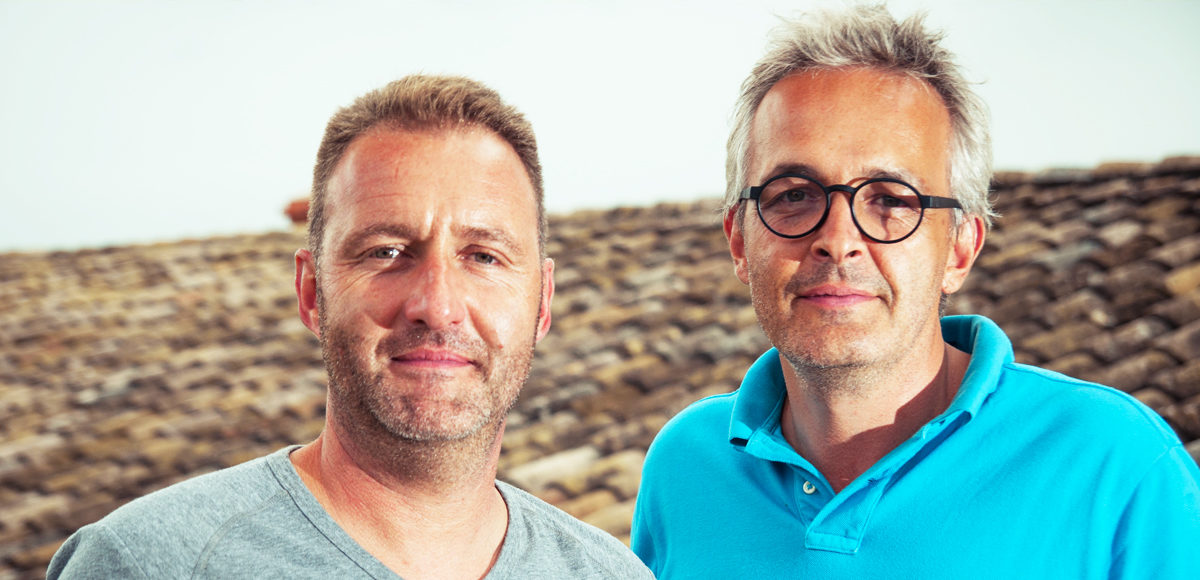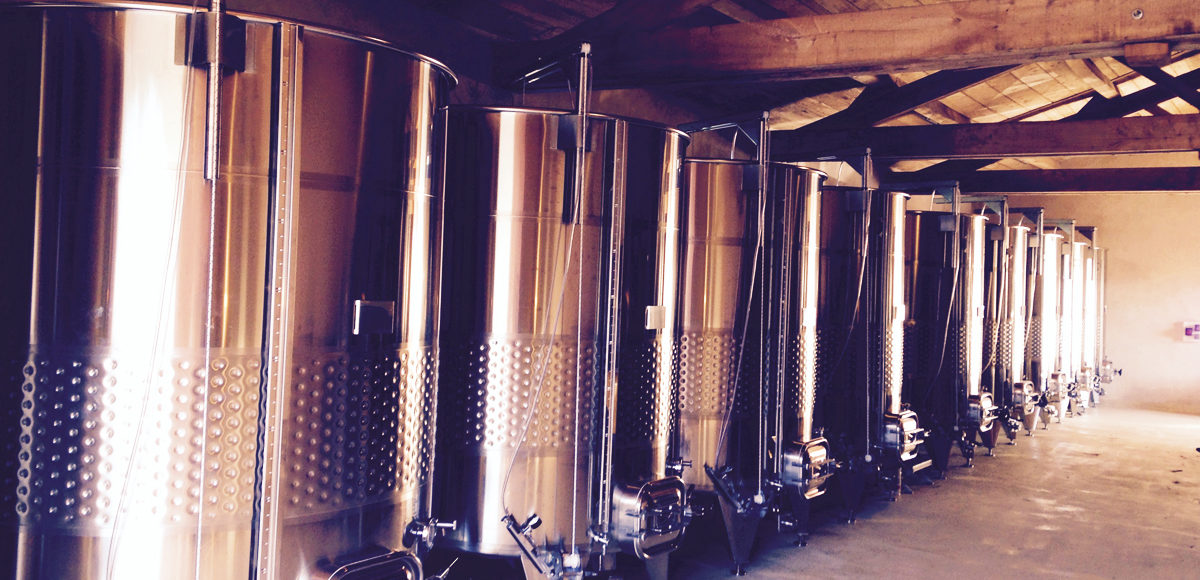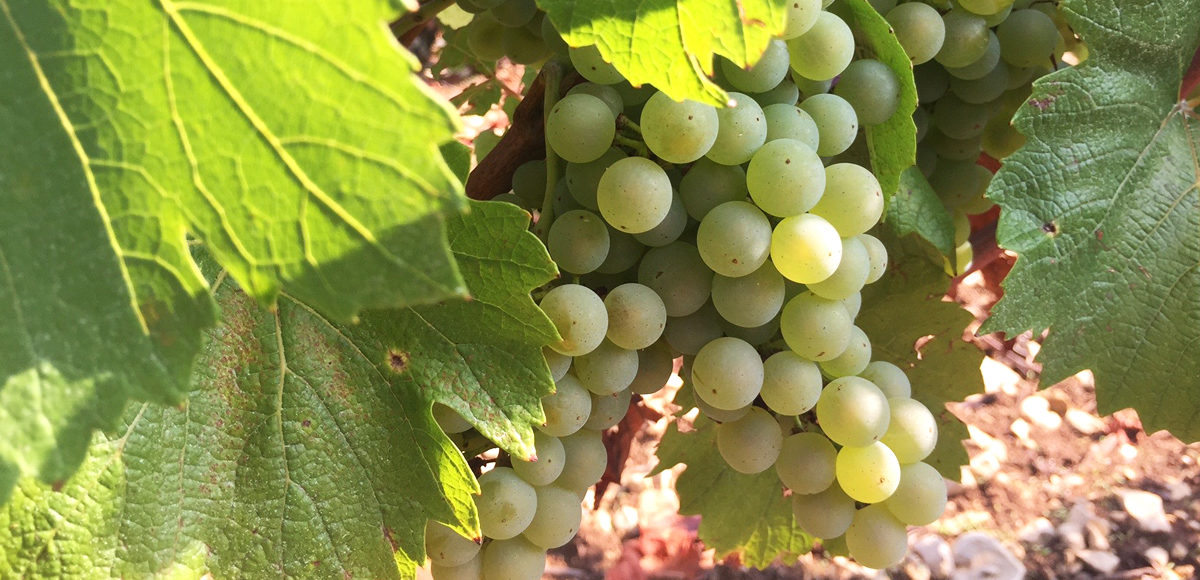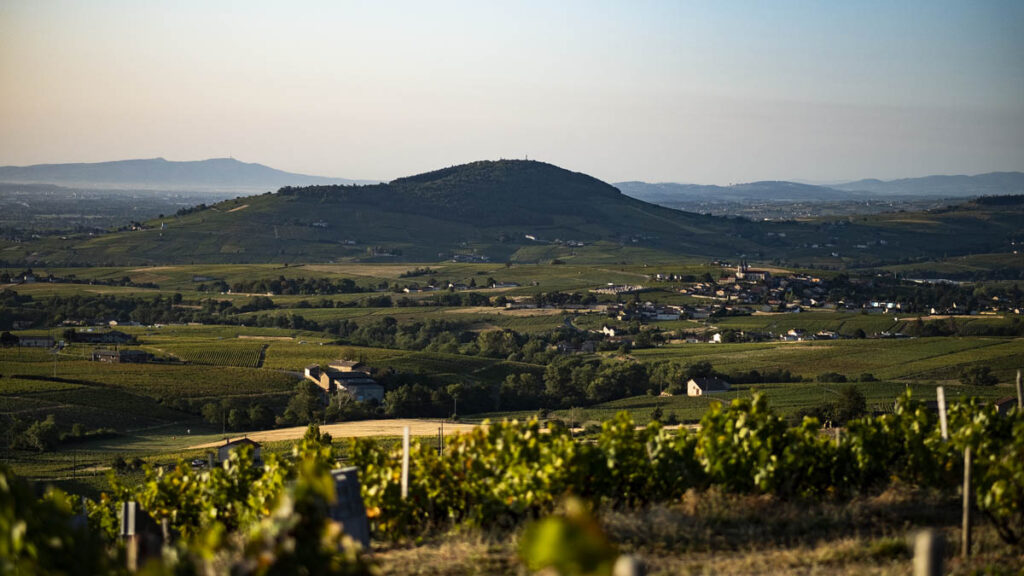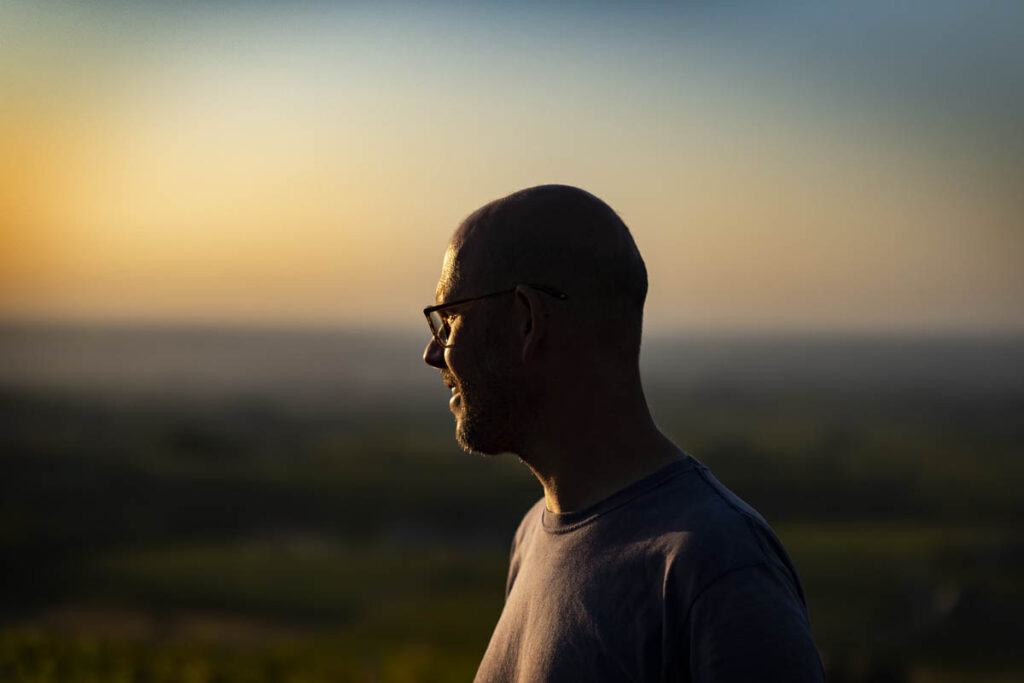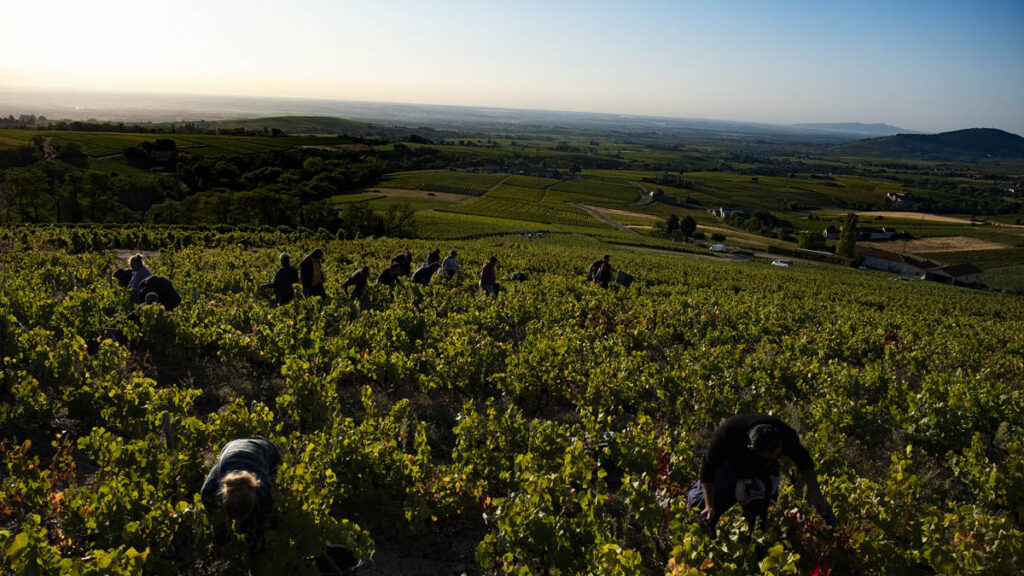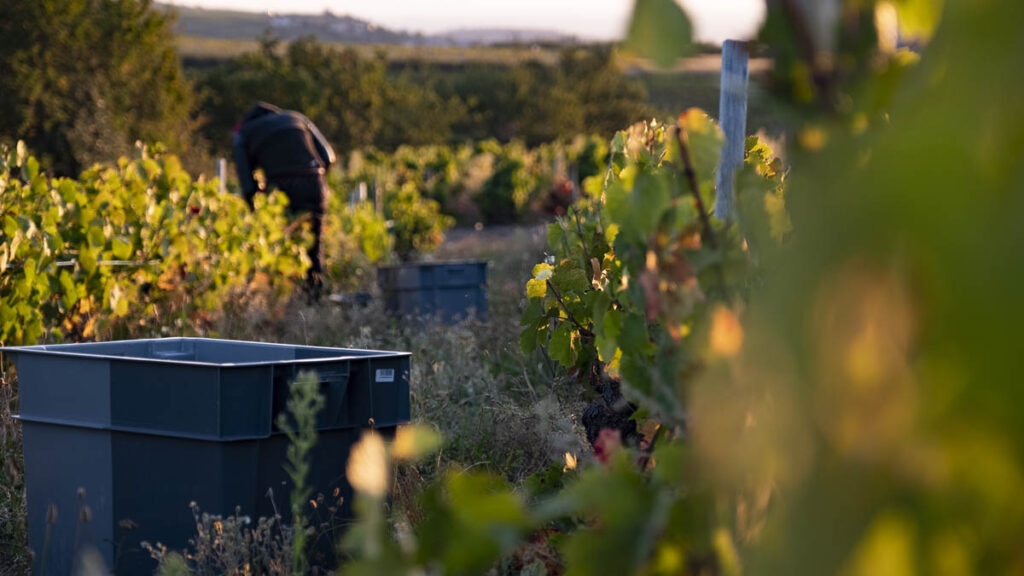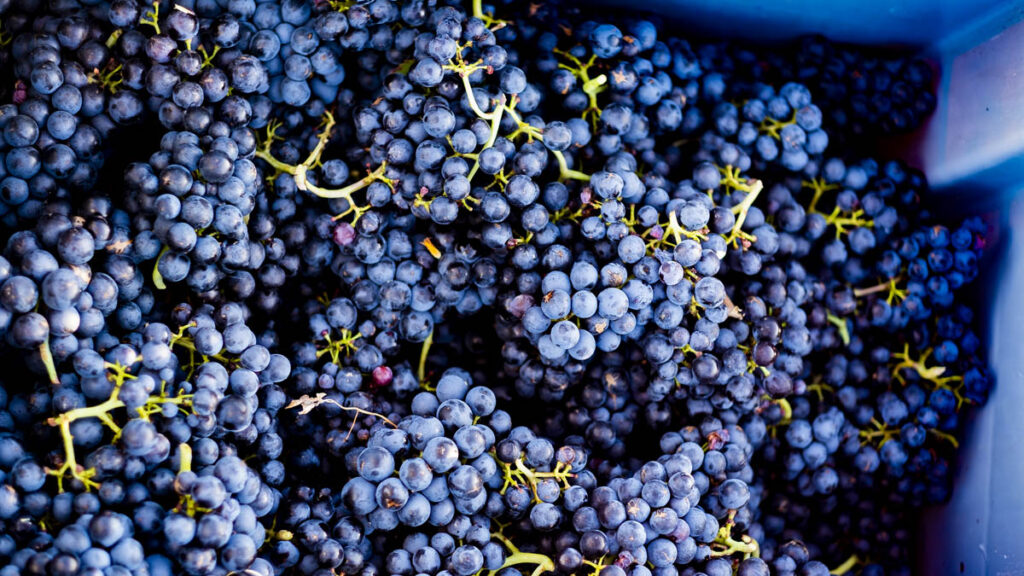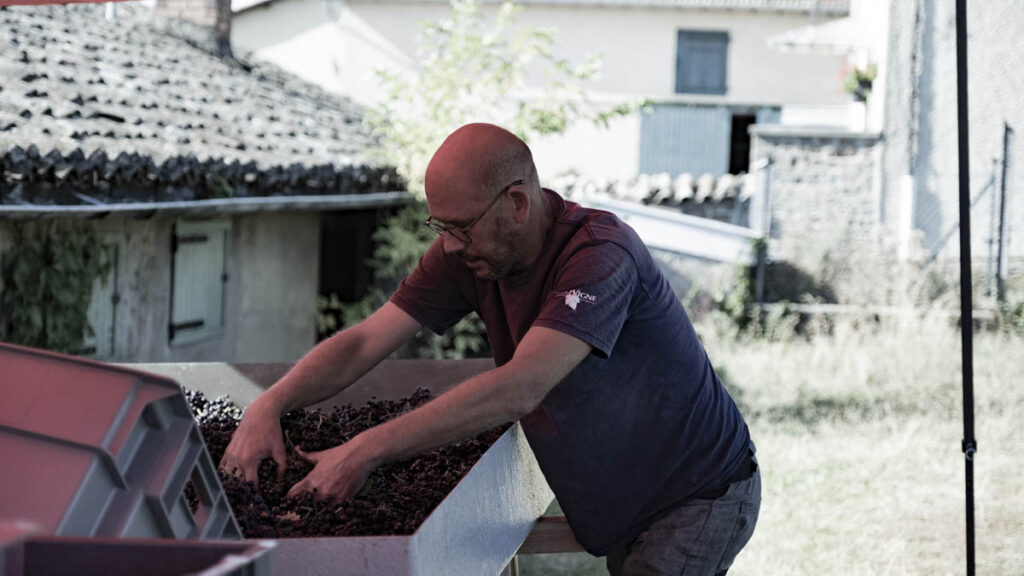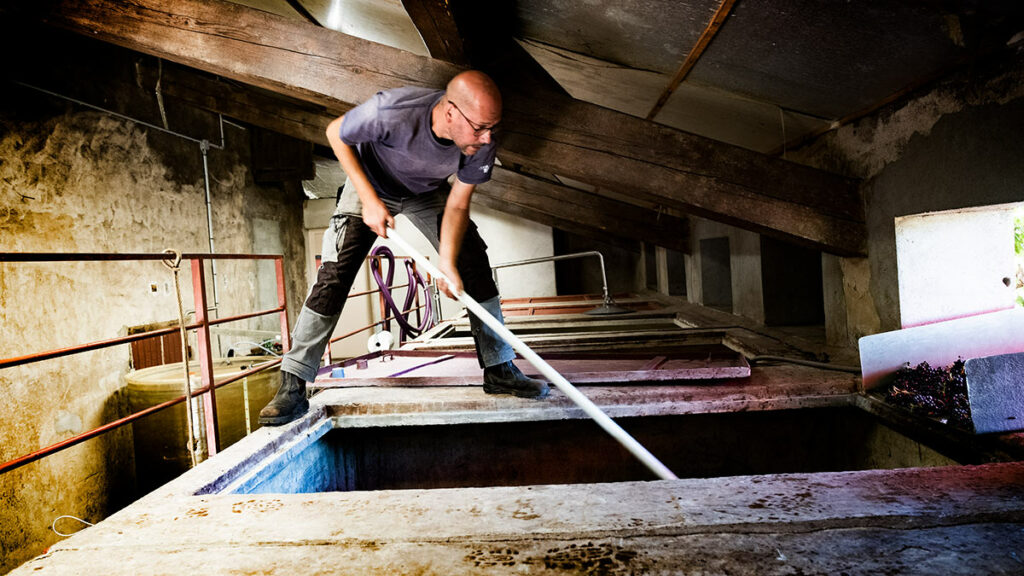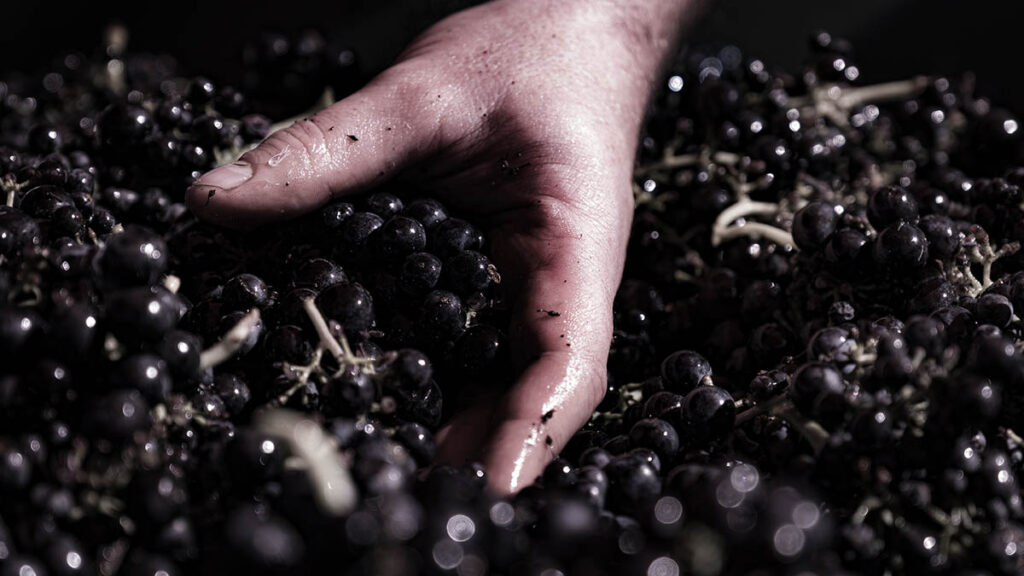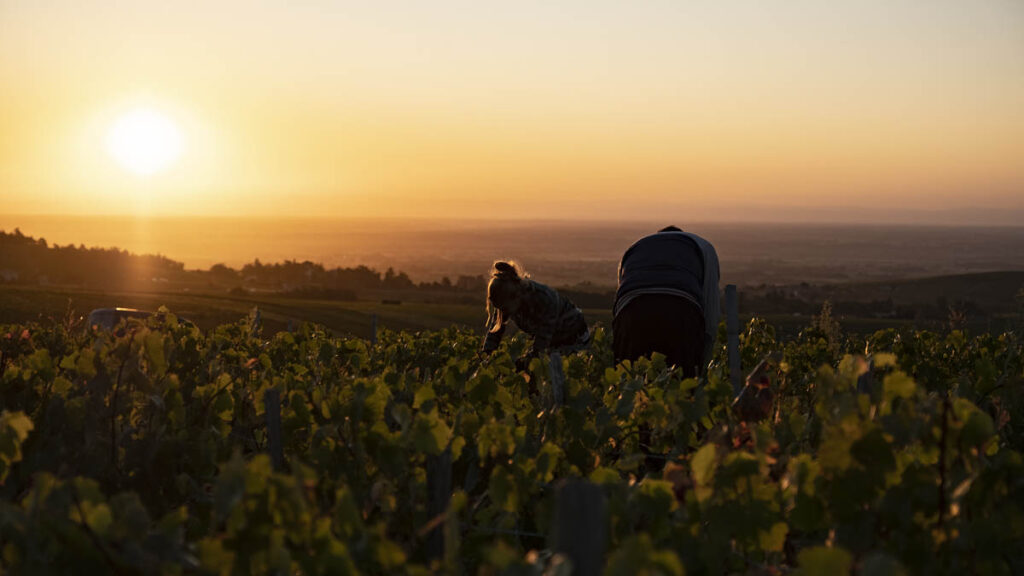“We strive to respect our different vintages, the age of our vines, and the types of our soil.” — Bruno Sourdais
Bruno Sourdais carries an intuitive understanding of his vines and cellar work that cannot be learned at any school, only transmitted from one generation to another. He and his wife, Sophie, bring this intuition to the family’s extraordinary holdings in and around Cravant les Côteaux. Their sensitivity to the varied terroirs in which their old-vine cabernet franc (the oldest planted about 1928) grows finds distinct expression in the wines. The sandy plains along the Vienne are the source for their light, quenching Les Cournuelles, while chalky silex slopes mark Les Clos with subtlety and finesse. On the hills, a single hectare of the legendary walled vineyard Le Chêne Vert, which takes its name from a magnificent oak that crowns the slope, literally stands apart. The vineyard is distinguished by its southwestern exposure, steep grade, and a rare clay limestone known as millarge; the wines by their extraordinary high-toned elegance. Through attentive viticulture and thoughtful cellar work, Bruno and Sophie seek a balance of fruit and acidity, freshness and subtlety, to achieve some of the most seductive, soulful Chinons we know.
Haute Olive
The Sourdais family have been making wine at their original domaine, Bouchardière, in Cravant les Côteaux, since its founding around 1850. Ownership has been passed from father to son over six generations; Bruno has led the domaine since 1991. Domaine de la Haute Olive, established in 1913 and now comprising 17 hectares, belongs to Sophie’s father, Yves Jaillais. Bruno and Sophie have leased the vines and made the wines since 2006.
Bruno Sourdais
“I realized quite young that my vocation was to work in the vineyards and to make wine,” says Bruno. After studies at the local winemaking school, he returned to the domaine, where he, and now Sophie and a small team, work in the vineyards, cellar, and offices. With Bruno, credentials matter far less than the sense that through him comes the expression of generations of winemaking. It is this perspective that allows him to realize his constant aim: “to respect our different vintages, the age of our vines, and the types of our soil.”
Cravant les Côteaux
Cravant les Côteaux, just east of the small city of Chinon, is, as Bruno points out, “a village of 700 inhabitants for 600 hectares of vineyards.” Just within the ambit of Atlantic influence, Cravant les Côteaux’s moderate maritime climate is excellently suited to its cardinal grape: cabernet franc. But at the core of the region’s vinous character is the diversity of its soils. The village takes its name from an old Gallic word for pebbles and the domaine’s holdings encompass sandy, gravelly flood plains of the Vienne, as well as clay silex and the clay limestone millarge. While the vineyards planted on alluvial soils give fresh, quenching wines, clay and silex slopes produce the fine, subtle wines, and the clay and chalk hill of the superb Le Chêne Vert are the source for the most elegant, age-worthy bottles.
Vineyards
Le Chêne Vert is a name well-known to lovers of Chinon, though few realize that this is not, in fact, a monopole of Domaine Charles Joguet. The one other vigneron who shares a single hectare of this extraordinary vineyard is Bruno Sourdais. His parcel is on the south-southwest-facing hillside, on millarge, where the average vine age is 35 years. Les Clos boasts 40- to 45-year-old vines planted on south-facing hillside vineyards on siliceous clay soils covered with various sized flint stones. Les Cornuelles is composed of two parcels, one of 60- to 80-year-old vines, another of centenarians, both on south-facing slopes overlooking the Vienne valley. The soils are of limestone, marl, and sand; the vineyard takes its name from the small white stones (cournuelles)scattered here.
Farming
The vineyards are farmed organically, in keeping with Bruno’s intuitive connection with the land and the vines and his belief that “observation and common sense are of greatest importance.” There is a mix of hand harvesting and mechanized work, depending on the parcel and vintage. The age of the vines combined with Bruno’s techniques of thoughtful canopy management, green harvests, and long hang times ensure low yields and high quality.
In the cellar
“Our strength has been to use the old winemaking methods from our ancestors and take advantage of the best of new technology, depending on the climatic conditions of the year,” says Bruno. “We always keep the wine aging in demi-muid and oak barrels.” Les Clos sees 10 to 12 months of élevage in decade-old foudre. Les Cournuelles is raised for 15 to 18 months in 80% neutral foudre, 20% barrique. Le Chêne Vert spends 10 months in 50% two-year old barrels and 50% new foudre.
“Respect for terroir has always been valued here.” — Denis Meunier
Although Denis Meunier is only 26, his small domaine is one of the most old-school you are likely to see in Vouvray. In 2012, Denis took over 13 hectares of chenin blanc (with vines up to 65 years old) from his father and uncle. Even after a string of heartbreaking vintages early in his tenure, Denis’s vision and dedication are unshaken. He is moving the domaine toward organic farming, with a resolute “respect for terroir” — in his case, the distinctive gravelled tuffeau and clay-silex soils of Vernou-sur-Brenne. Recent investment in more sophisticated equipment is allowing Denis to work with much greater precision on the press pad and in the cellar. The results are pure, crisp, lively chenins that both harken to a classic Vouvray style and anticipate a long trajectory of terroir-focused winemaking for this driven young vigneron.
Denis Meunier
“The history of the house dates to 1927,” Denis explains, “when my grandfather acquired his first parcels of vines already planted on the way back from the First World War.” Denis’s father and uncle ran the domaine for nearly four decades, until 2012, when Denis took over, fulfilling a dream. “I have always wanted to do this job,” Denis explains. “My father let me drive my first tractor to plow the vines at the age of 15.” Now he is driven “by passion and especially by the desire to create my own wines from plot selection.” He and his partner, Estelle, manage the domaine with help in the vineyards from Denis’s father and uncle and a handful of seasonal workers. “Respect for terroir has always been valued here, even in my father’s time,” Denis says. “Today, it’s mostly the material that has evolved. My investments were mainly focused on the quality of the vines and the wine.”
Vouvray
Vouvray is one of the Loire’s great terroirs for chenin blanc. As part of the Paris basin, the soils are largely fossilized marine based. The bedrock, from which the region’s myriad historic cellars are cut, is tuffeau. The topsoils are flinty clay, limestone, gravels, and marls. The climate is marked by the tension between moderate maritime and more extreme continental influences. This, and the fact that Vouvray is traditionally one of the last parts of France to harvest, opens vignerons here to great risk — first, of severe weather, foremost hail (as Denis experienced in the string of vintages between 2014 and 2016, when he and many around him suffered devastating crop losses), later, of disease. The reward is a cool climate that allows both the acid edge and haunting, subtle depth of chenin to develop to maximum potential. Multiple vineyard passes are key to producing the traditional range of styles, from sec to moelleux to sparkling. The wines can fall anywhere between austere and opulent, depending on the ripeness and botrytis levels of the vintage.
Vineyards and farming
Vernou-sur-Brenne, where the Meunier vineyards are clustered just south of a small Loire tributary, is one of 8 villages in the Vouvray AOC. Most of the domaine’s 13 hectares of old-vine chenin are planted on south-facing slopes of varying steepness. On the hillsides, the soils are clay and flint, which yield dry, aromatically refined wines. In some vintages, these vineyards give the base wines for sparkling bottlings. From the gentle clay and limestone slopes come the semi-dry still and sparkling wines. Denis selects the plots he wishes to vinify depending on the character of the vintage. Since taking over, Denis has begun to move the domaine toward organics. Extensive planting of cover crops, green harvest, and leaf pulling are practiced to ensure soil health as well as loose, well-ventilated clusters, adequate sun exposure, and above all to prevent botrytris, which Denis sees as the “number one enemy” of the delicacy and brisk vitality of his wines.
In the cellar
Cellar work is aimed at preserving the tradition of crisp, light, classic expressions of Vouvray. All the wines are given slow, gentle press cycles, followed by spontaneous fermentation in stainless steel tank, with cold settling. Post-fermentation, the wines are racked and allowed long periods on the fine lees, with batônage for some cuvées. The traditional-method “Insolite” spends a minimum of three years sur latte and receives no dosage. The wines typically finish in the style vignerons here call sec tendre, with a few grams of residual sugar to balance acidity and enhance the pure and irrepressible vivacity of the fruit.
“The cultivation of the vine is like a love story, giving pleasure and driven by passion.” — Hervé Baudry
Baudry Family and Sancerre History
The Baudry family’s domaine was purchased in 1920 by Hervé’s grandfather, who lived in Sancerre and was considered a master grafter. This was a crucial skill in the early 20th century, as winegrowers labored to replant their vines after the Phylloxera plague devastated most of the vineyards throughout Europe. The solution to the American-imported root louse was to replant vineyards on the rootstock of American vinestock, which had evolved a tolerance. Naturally, the propagation of the massive amounts of rootstock, planting it, and then grafting French varieties onto the trunk was a massive project that took decades.
Interestingly, before Phylloxera, the area around Sancerre was esteemed for its red wines from Pinot Noir and Gamay. Given the unheard-of opportunity to rebuild a region’s vineyards from scratch, the vintners of Sancerre chose to focus on Sauvignon Blanc, an intriguing choice given that Sauvignon hadn’t even been the area’s top white variety (that was Chasselas). The reason for this decision is unclear. Some people suggest that it was technical: the growers discovered that Sauvignon Blanc vine accepted the grafting process more readily than other varieties. However, some historians suggest that the decision was based on aesthetics, commerce, and terroir. Before phylloxera, they contest, Sauvignon Blanc was the most sought-after of Sancerre’s wines and fetched the highest prices.
Jean Baudry took over after his father, the grafter, and truly grew and developed the estate, increasing vineyard holdings and opening channels of sales and distribution. Jean’s son Hervé continued the progress, modernizing the estate, creating different cuvées, and helping to organize and empower the appellation by serving on the grape growers’ association of Sancerre. Today, Hervé is joined by his sons Bastien and Quentin, who both trained in Burgundy.
Sancerre Soils and Climate
Whatever the actual reasons were for replanting the appellation to Sauvignon Blanc, it was an inspired choice, as Sancerre has never looked back. Its soils and climate are considered a perfect match with the Sauvignon Blanc variety. To this day they produce one of the world’s most iconic wines, one lauded for both its capacity for serious terroir expression and its ubiquitous popularity.
Located in central France, a couple hours by car south of Paris, the Sancerre appellation occupies the eastern end of the long, lateral Loire Valley, comprising some 14 communities based around the eponymous town.
Famously the region boasts three main soil types, each one yielding sauvignon blanc of a somewhat different character. The most common soil is Oxfordian limestone, which comes mixed with clay in either sharp white shards or in a gravel admixture known as caillottes. This soil, which accounts for over 50% of the region, tends to produce the light, bright, aromatic, minerally Sancerre the region is best known for.
Another soil type is silex—the local term for flint or chert—which can be found in the eastern extremity of the appellation and across the Loire, where it’s a major component of Pouilly-Fumé. While accounting for just 20% of Sancerre’s soil, Silex makes a distinctively powerful, rich, profound wine.
Finally, there’s Kimmeridgian marl, a hard limestone-clay formation and the same stuff as found in Chablis and Champagne. It’s found more in the western districts of Sancerre and produces powerful, mineral wines with a heavy soil signature that makes them sometimes more similar to Chablis than to wines grown on caillottes or silex.
Famille Baudry’s vineyards are spread out on the rolling hillsides among the villages of Sainte-Gemme-en-Sancerrois, Sury-en-Vaux, and Verdigny. They lie on classic Oxfordian limestone in both its major forms: the chalky white, stony soils and the more gravelly caillottes. The vast majority of the vineyard is planted to Sauvignon Blanc, but a couple of hectares are given to Pinot Noir and gamay. The climate here is a somewhat stiffened Atlantic one, meaning that while it doesn’t suffer the hot-and-cold extremes of a true interior continental climate, it is far enough inland from the Atlantic, that it’s also not completely oceanic. Therefore it’s not as subject to the rainfall, wind, and sometimes balmy weather of the coast, which diminishes as it travels up the Loire toward France’s interior.
Viticulture and Winemaking
As mentioned above, the Famille Baudry has farmed organically since 2010, though their official certification arrived only in 2023. Throughout the family’s holdings, the vines average 50 years of age, though their oldest site, called “Le Croc de la terre” is almost a century old.
Their vineyard philosophy is simple and direct—harvesting clean, ripe grapes is the most important factor in a successful vintage, so great work is done to ensure that, which makes the rest of production simple and seamless. Proper ripeness is paramount, so the family is not opposed to risking letting the fruit hang out to achieve full maturity during dicey vintages.
Harvest is done quickly by machine—not uncommon in the area—except for the old, delicate vines of Croc de la Terre. Grapes from each of the three villages are fermented separately, half inoculated with an aromatically neutral yeast strain and fermented naturally with ambient yeast. After a long, cool fermentation, the villages are blended to create the various cuvées. The winery prefers cold clarification and settling to clarify their wines, and filtration is largely avoided. Only minimal amounts of sulfur are used.
The Croc de la Terre vines are hand-picked. The red grapes see a five-day cold pre-maceration to carefully extract color and aromatic compounds before undergoing a whole-bunch, semi-carbonic maceration for 15 days before pressing. Malolactic occurs in an old 500-liter cask and is bottled without filtration.
“I want the wines to express by themselves what the vineyards have to say.” — François Lequin
Beyond anything else, the wines of this historic domaine bear the imprint of the vineyard, with a distinct emphasis on purity and transparency. From enviable 1er and grand cru holdings in Santenay and Chassagne-Montrachet, vigneron François Lequin lets each site speak in the clearest possible voice, preferring to take “a small hand” in the cellar. The farming is certified organic and François is constantly exploring new ways to allow soil and vine to express themselves. There is a bright freshness to the wines’ profiles, from the unfined, unfiltered Retour aux Racines that is a complete departure from basic Bourgogne Blanc to the regal, but never overbearing Bâtard-Montrachet. The pinot noirs are charming and fruit-driven, marked by drinkability and finesse. Altogether, the Lequin-Colin range represents an all-too-rare opportunity to tap into a source of tremendous quality and value in Burgundy.
History
François’ family have been vignerons in Santenay since 1673. The story from there is an intricate tapestry of Leqins and Colins weaving back and forth over generations and across communes. The upshot is the 11-hectare inheritance François now holds in his hands: a carefully constructed collection of parcels divided between Santenay and Chassagne-Montrachet, with additional holdings in Pommard and Nuits-St.-Georges. Since 2014, François has also been involved in Domaine des Crets [INSERT LINK], where he and a partner bring a Côte d’Or sensibility to 4 hectares of vines in the northern Mâconnais.
Region
Santenay marks the southern tip of the Cote d’Or. It shares a border with Chassagne. Geologically, it overlaps the Cote de Nuits. This makes it a fascinating point of intersection of terroir, tradition, and evolution. Over the past century, Santenay has gone from being a stronghold for pinot noir to a carveout for chardonnay. “It used to be 99% red until the ‘80s,” notes François. “Now I would say it’s 15-20% white, especially in the parcels close to the village itself.” It is best known for its clay-rich limestone soils, with structure and freshness being the hallmarks of the wines. In recent decades, Santenay, lacking a marquee producer, has become somewhat overlooked, making the discovery of the Lequin-Colin wines all the more exciting. The Lequin-Colins are fortunate to have lieux dits, 1er and grand cru holdings in Chassagne, including Morgeot, Vergers, and Caillerets among the former, and precisely 14 rows of vines in the majestic Bâtard-Montrachet in the latter. Further, they have a literal outlier in their holdings on the hill of Corton, Corton-Charlemagne Grand Cru, from which the domaine’s grandest wine comes.
Winemaker
François was educated in Avize, Champagne, and then worked under David Ramey at Chalk Hill in California. It was during his studies that François decided he wanted to take the significant step of converting the domaine to organic farming. In 1996, he returned home to begin working alongside his father, eventually taking the helm himself. Year by year, he has gained a keener understanding of the character of each of the family’s parcels. It is this highly individualized character he takes such pains in the vineyards to capture and in the cellar to transmit. His philosophy is “back to the roots: working as my father and grandfather were doing.” He especially values the diversity of his holdings: “Making good wine is not enough. Having them be affordable, too, is very important to me.” Palate, precision, and purity are his guiding principles.
Vineyards and farming
All of the vineyards have been organically farmed since 2009 and Ecocert® certified since 2012. Biodynamic ideas were introduced in 2010 and François continues his exploration of producing terroir-driven wines in an environmentally sustainable way. Chardonnay vines are pruned “Guyot Simple,” and pinot noir pruned “Cordon de Royat.” The grapes for all crus are harvested by hand and pick time is determined by acidity level, not sugar. François believes that Burgundy’s bête noire — premox — which has affected so many producers, was due to several factors, including a lack of rigorous sorting. To combat this, he employs a substantial crew during the season, reaching over 40 employees at harvest. Of this compliment, nearly 30 are in the vineyards sorting and picking the grapes, three are on the winery team, and the rest are on the sorting table and managing the press.
In the cellar
“The day after picking, the juice is in barrel,” François likes to say. For the chardonnay, he uses a pneumatic press, but presses very slowly, between three and a half and four hours per press. He then lets the juice “go-to-brown” to oxidize all the unstable, oxidative components, then lets it settle for a full year before racking. On average, the goal is to have only 10% new oak for the alcoholic and malolactic fermentation for the chardonnay; François favors Chassin and Rousseau French oak. Prior to malolactic, light bâttonage is done and after malolactic, the chardonnay is left on the full lees until just before harvest; the wines are bottled in December. François’ goal is to use as little SO2 as possible while assuring the wine is clean and stable. “Less and less” is the goal. He attains this through protective, reductive practices and by now his total SO2 levels are lower than the Demeter maximum range for biodynamic winemaking. You will not find a botryitisized, overly-rich chardonnay (which is in fashion now) in the Lequin-Colin range; nor will you find an overtly reductive style (also currently in fashion). What you will find is a transparent and evocative expression of chardonnay from the strikingly different climats in the Lequin-Colin stable.
For pinot noir, the process is a bit different. The harvest is handled the same way, in terms of picking being determined by acidity rather than sugar level. When the grapes come in, a determination is made as to how much whole cluster will be included. This is entirely vintage dependent. François is a believer in the beneficial uses of stems for extracting color, giving structure, as an antioxidant. However, he is also cautious about unripe stems adding herbaceous characteristics to the wine.
After the sorting table and the grapes are crushed in vats, François adds a little SO2 to the pinot noir mash to help extract color; the fermentation lasts between two and a half and three weeks, after which the grapes are pressed and racked into French oak barrels from Chassin and Hermitage. Again, only about 10% new oak is used for the red wines and SO2 is added based upon the pH post-malo. The pinot noir is left on the fine lees until spring, when it is racked for the first time. It is racked again in August and once more in the autumn before bottling in February/March.
François’ take on premox from a cellar perspective is that “we forgot to give the wines time.” The arrival of the pneumatic press made it possible to press very gently, but also very quickly. “You have to know how to use it,” he notes, “slower pressing keeps the protective natural yeasts from the vineyard.” François also believes there was too much new oak introduced into the cellars in the 1990s and that the wines were bottled too quickly — “an old winemaker’s saying holds that you only bottle a wine after two winters”— and that corks, which were bleached against TCA but became overly permeable as a result, were also an issue. Needless to say, he has used this experience and awareness to take all appropriate measures to protect his wines for aging with elegance, freshness and grace.
“My philosophy is to make wine as naturally as possible. Simple, isn’t it?” — François Lequin
Domaine des Crêts is a partnership between François Lequin and Matthieu Ponson — two friends allied by a shared philosophy and an admiration for the wines of the Côte de Beaune. François was born into a family of vignerons in Santenay and has been the winemaker at Domaine Lequin-Colin since 1996. Matthieu was raised in Cornas, with a background in engineering, but went on to become a winemaker in the Vaucluse. When the two were introduced several years ago, they quickly realized they held the same passion for Burgundy and the same goal of purchasing vineyards in the northern Mâconnais and cultivating wines of Côte d’Or standards there. So, together, they took over the former Domaine Pascal & Sylvie Pauget and in 2014 made their first vintage as Domaine des Crêts. Today the domaine encompasses 4 hectares, with farming in conversion to organics. The emphasis on restricted yields, clay-limestone soils, native yeast fermentations, and deliberate must oxidation to ward off the bête noir of Burgundy — premox — show François and Matthieu’s vision is already translating into compelling reality. The animating idea is to grow and make a small range of great Mâcon chardonnay that balances minerality and richness. The results are elegant but approachable wines with no shortage of tension, vivacity, or length.
Region
The Mâconnais, tucked between the Côte Chalonnaise and Beaujolais, is a place of rolling hills and punctuating cliffs, still given over to mixed agriculture in a way that sets it apart from much of the rest of Burgundy. The region is divided into valleys, the Grosne to the west and the Saône to the east. The des Crêts vineyards are at 250-300 meters (820-980 feet) above sea level, within the “Mâcon-Chardonnay” commune, corresponding to the area between the villages of Lugny and Ozenay in the far north of the Mâconnais. Although the region enjoys a warmer, more generous climate than the Côte d’Or, it shares a similar soil profile, dominated by argilo-calcaire soils. The grape here is, of course, chardonnay — the commune is thought to be both the cradle and the namesake of the variety. “The vineyards became known thanks to [nearby] Cluny, as well as Citeaux, abbeys. The monks allowed for the advance of viticulture but also the visibility of the wines of Burgundy,” François notes.
The Winemakers
François and Matthieu had both wanted to be winemakers “since always,” says François. François was educated in Avize, Champagne, and then worked under David Ramey at Chalk Hill in California. In 1996, he returned home and started working at the family domaine, René Lequin-Colin, where the Lequins have been vignerons since 1673. Matthieu grew up in Cornas and graduated as a telecom engineer, but as soon as he had the opportunity to choose his profession in relation to his passion, he opted for winemaking. He’s a self-taught enthusiast who counts himself lucky to have François as mentor and partner.
Vineyards and farming
The estate is comprised of two parcels, l’Échenault de Serre at 2.3 ha and En bout at 1.6 ha. François notes “L’Échenault is lower on the hill, a bit riper, contains younger vines, and reveals more richness, ripeness, and texture. En bout is higher up, at 300 m.a.s.l., with more exposure to wind, less ripe fruit, and comprised of older vines; it tends to show more structure and mineral components – more elegance and complexity.” The soils are clay-limestone. Vine age averages 25 years for En bout, and between 5 and 25 years for l’Échenault. “In 2016, we planted over pinot noir to chardonnay, with a majority of massal selection and a few clones,” François relates. He and Matthieu undertook the conversion to organic farming in 2016. “Respect the environment and the natural cycle of the vine, limit interventions, and highlight the typicality of the soil” is how François defines their approach.
In the cellar
Although François aims to make the wines in Ozenay just as he does his 1er and grand cru wines in the Côte d’Or, he knows there are differences: “Getting ripeness is not difficult, keeping acidity is not easy,” he says of the Mâcon vineyards. “We decide to harvest by taste verified by acidity and pH, not by sugar level. Then, intervene as little as possible in the wines,” a philosophy that extends to work with native yeasts, full malo, and little added SO2. François is adamant that the grapes undergo a long and gentle press cycle, often between three and four hours, with frequent barrel rotations. He is also of the mindset that the juice must oxidize before undergoing fermentation to help combat premature oxidation (premox), the unfortunate and well-known complication that has affected countless wines, particularly white Burgundy, over the last decade or so. With energy and tension as the goals, François and Matthieu ferment in stainless under temperature control, perform battonage once a week throughout elevage, filter, and fine with clay. The wines then spend 11 months aging in oak (10% new). Side by side, En bout and l’Échenault are unmistakably distinct but share the common goal of balancing minerality and richness.
Philippe Viet is the unusual vigneron of France, as he came to winegrowing not via family legacy or local tradition, but by sheer choice and will—as a consumer, student, and lover of wine. While he may have lacked a childhood among the vines, he did grow up in a family that appreciated good food and celebrated fine wine. His exposure to wine thus started at a young age and continued, self-driven, during university and business school and later during his first career jobs in the fields of banking and IT consulting. During university and after he remained an avid wine student, participating in tasting groups and even completing several WSET diplomas. While achieving the latter, he recognized that his deep and abiding interest in wine might be transformative. So, he decided to change his life.
As a first exploratory move, in 2015, to get his feet wet, Viet secured an apprenticeship in Beaujolais with Eric Janin of Domaine Paul Janin et Fils in Moulin-à-Vent. At this point, Viet only knew he wanted to work in wine, but hadn’t any idea what branch to specialize in. His time under Janin’s tutelage had a powerful effect. While Viet learned a great deal about winegrowing he also came to develop a love of the Beaujolais’s undulating hills, soulful people, and generous community. He also routinely credits Janin for instilling in him something more profound than even vine craft: a deep and underlying humility regarding the role of the winemaker as respectful steward of the land. This revelation along with his growing desire to be outside in contact with nature, Viet confirmed that he wanted to be in wine production.
Viet continued his education both formally—taking winemaking classes in Beaune—and experientially working under Mathieu Baudry of Domaine Bernard Baudry in Chinon and at Lethbridge Wines in Geelong, Australia. By the end of 2018, things had fallen into place quickly back in Beaujolais, as he found a house to live in and 2.5 hectares of vines of Régnié. His career as a vigneron was about to begin.
Viet’s wines are not his only form of expression. Since childhood, he’s maintained a strong interest in art. Consequently, he changes the design of his labels annually, with each vintage expressing in bold colors the inspiration of different artists. He loves cooking and music and lives near his vines in Morgon with his girlfriend and their dog, Oxford, and cat, Ziggy.
Farming and vineyards
Beaujolais turns out to be a perfect match stylistically, culturally, and terroir-wise for what Viet wanted and the kinds of wines he wanted to make. It is Burgundian in style without being subject to the patrician cast of the Côte d’Or. The local grape, Gamay, proves an ideal partner, as well, producing relatable wines that are both fruity and earthy, capable of terroir expression and midterm aging while still being within reach of the average wine drinker.
Viticulturally, Beaujolais fits right in between Burgundy and the Rhone, where it also happens to be nestled geographically. In the northern part of the region, rolling granite hills define the landscape, and it is here where the region’s most expressive, complex, and definitive wines are produced. Soils run between hard granite, sand, and sandstone, and instances of schist, alluvium, and clay. The ten cru villages— of which Viet farms parcels in Régnié, Fleurie, and Morgon—are Beaujolais’ standout wines.
Viet approaches the vineyard with intention and effort, allowing respect for the terroir and health of the soil to guide his farming practices. To that end, he farms organically and is moving all of his parcels towards organic certification by the standards of the Alpes Contrôles certification body. So far, he has achieved this goal in his plots of Beaujolais Villages, Régnié, and Fleurie. Morgon, he expects, will be certified by the end of 2024.
The vineyards Viet took over had been well tended (though not organically) by the same people for forty years. They were planted with standard Gamay clones. While he continues to work these vines, over time he will evolve the composition of the vineyard. As vines expire, he replaces them individually or plot-by-plot with massale selections—individual cuttings he’s selected from older vineyards based on desired characteristics. Currently, his vines average between 50 and 60 years of age. The Régnié and Morgon plots feature sandy and granitic soils, whereas Fleurie is more purely sand. The Régnié plot is distinguished further by its elevation (between 400 and 450 meters), which emphasizes acidity and freshness in the wine.
In the Cellar
When it comes to winemaking, Viet’s goal is to optimize site expression while producing soft, elegant, and supremely digestible wines. He’s not attached at this point to any singular method of fermentation and enjoys scrutinizing the differences achieved by inoculation with a starter, spontaneous fermentation, and pied-de-cuve. Musts are fermented in concrete vats equipped with cooling devices to prevent fermentation temperatures from exceeding 30º Celsius. Extractions are gently made using either pump-overs or foliage (gentle crushing). SO2 is used in only minute quantities. After draining the tanks, the young wines are aged in various vessels, running from sandstone amphoras to 500-liter oak puncheons (Fleurie) and stainless steel or fiberglass tanks. The wines go into bottle during the following summer and enjoy around four months of further rest before entering the market.
